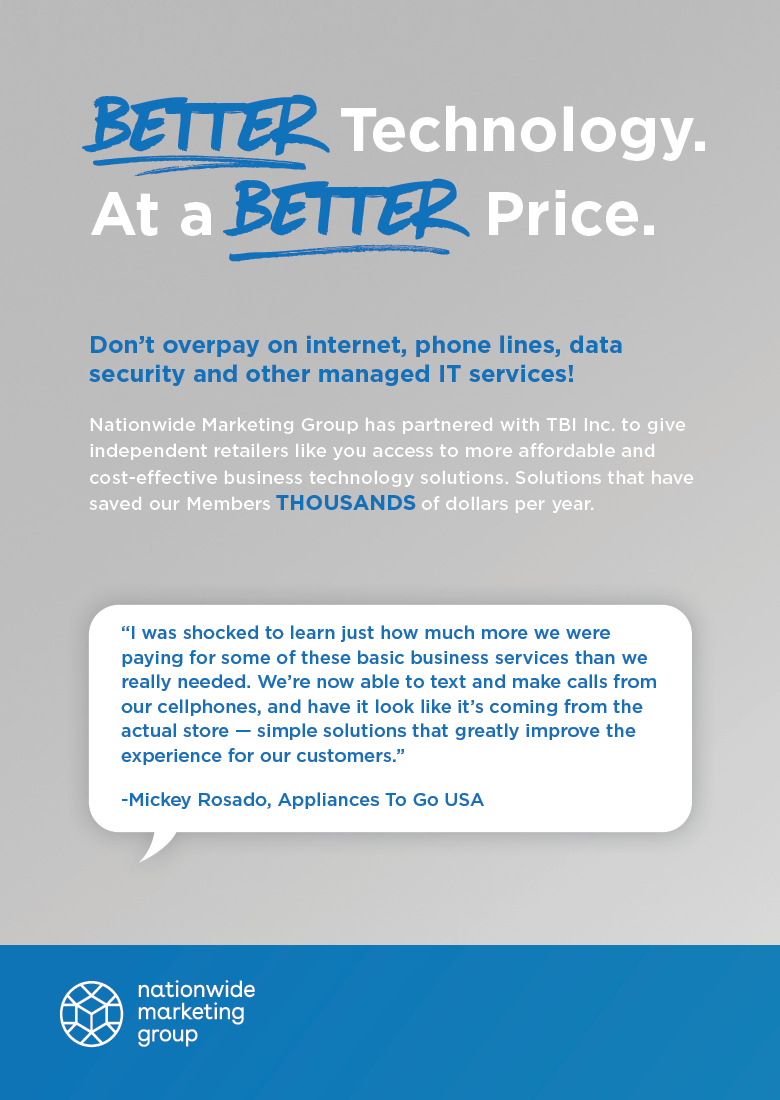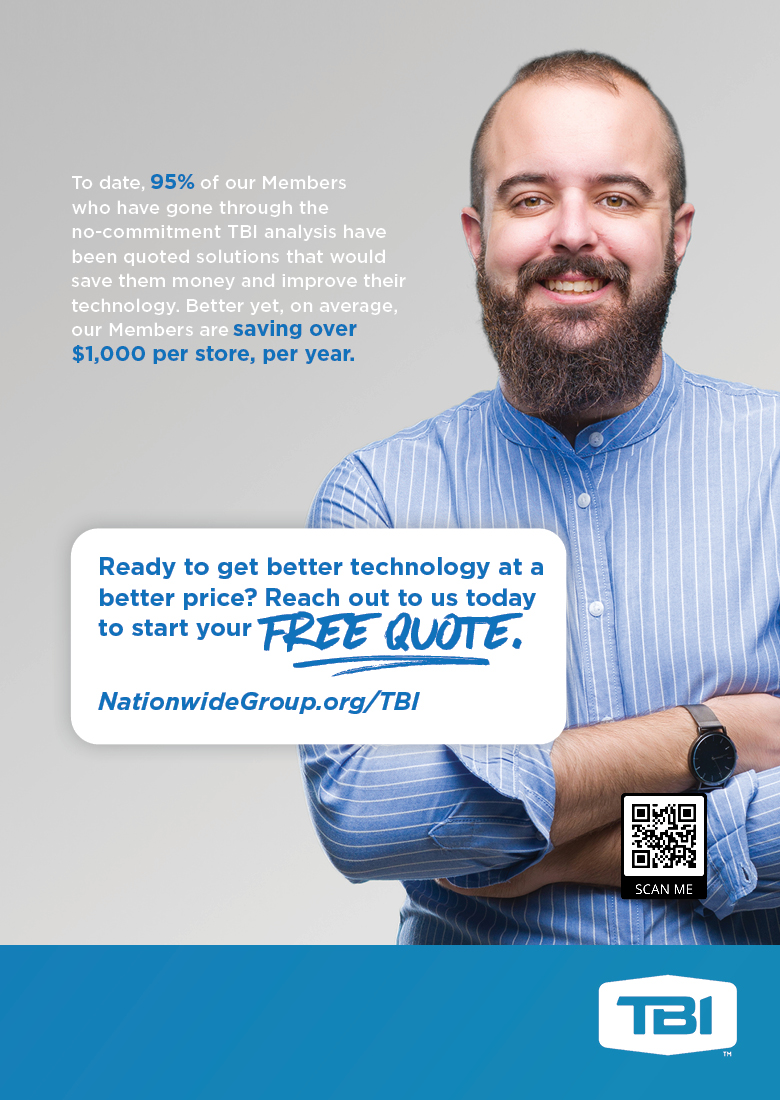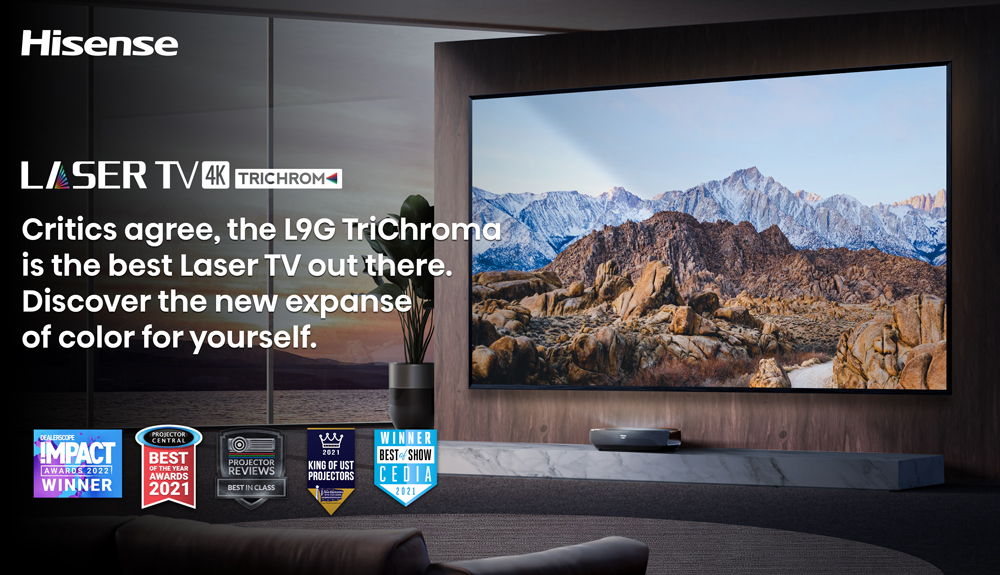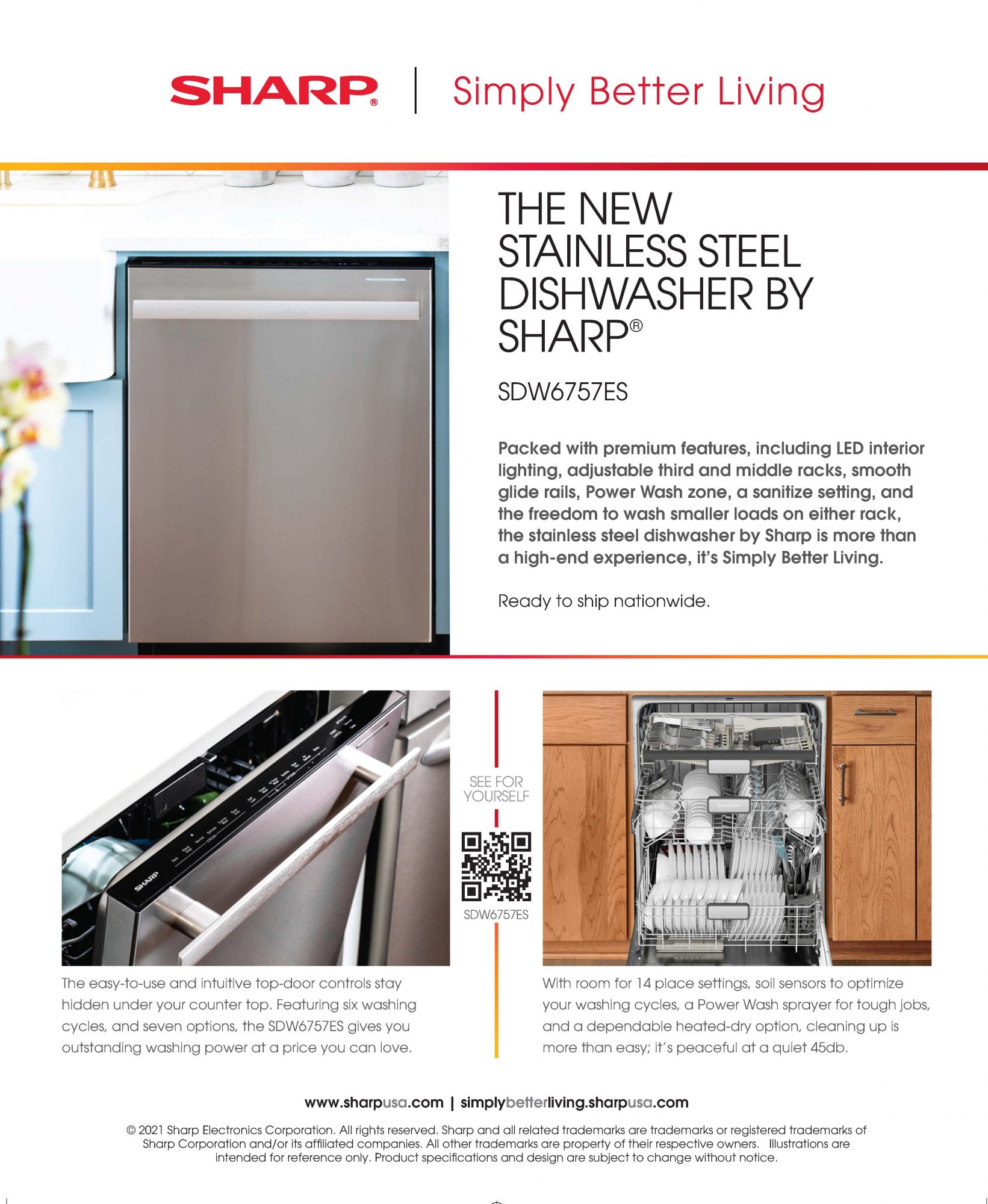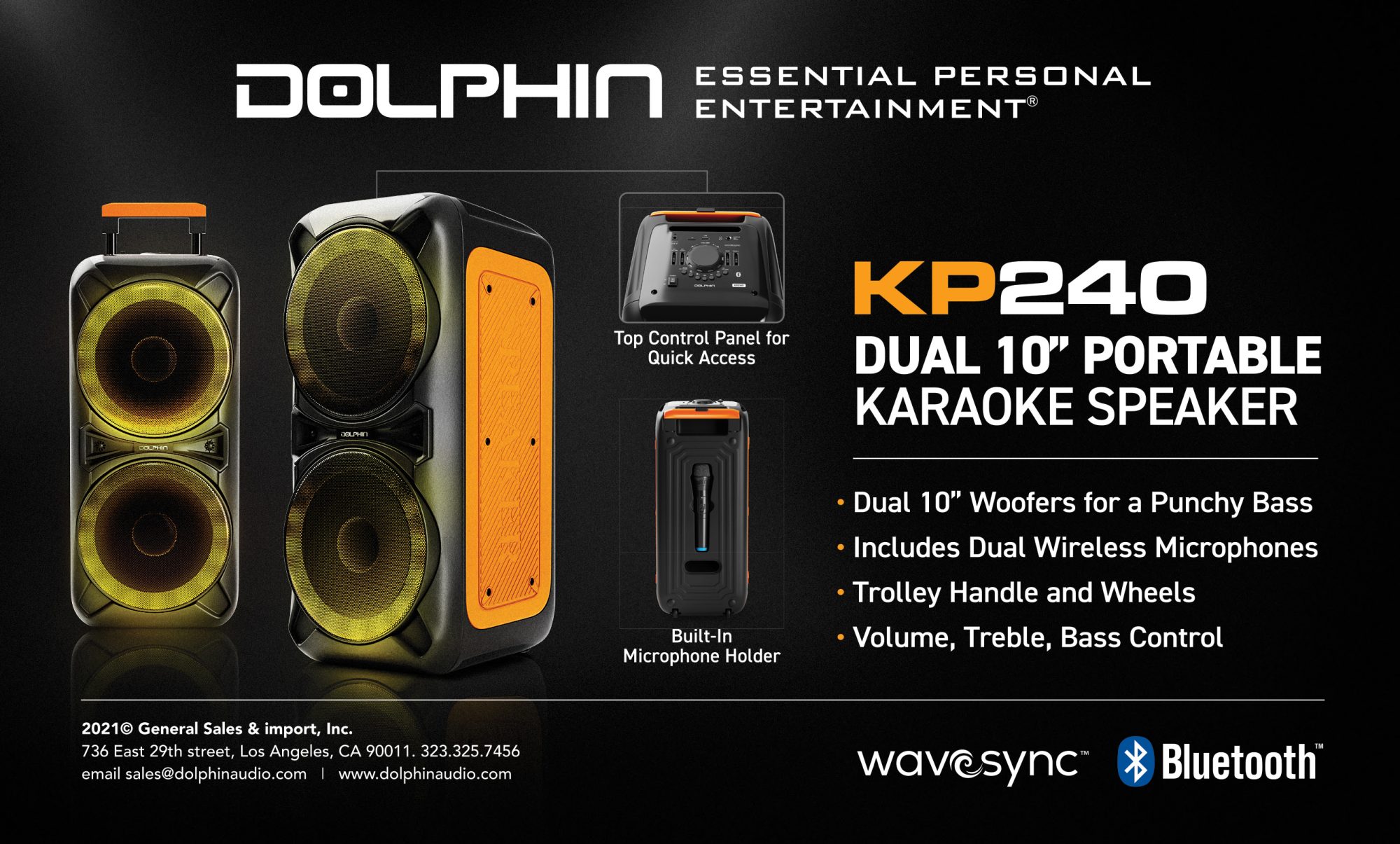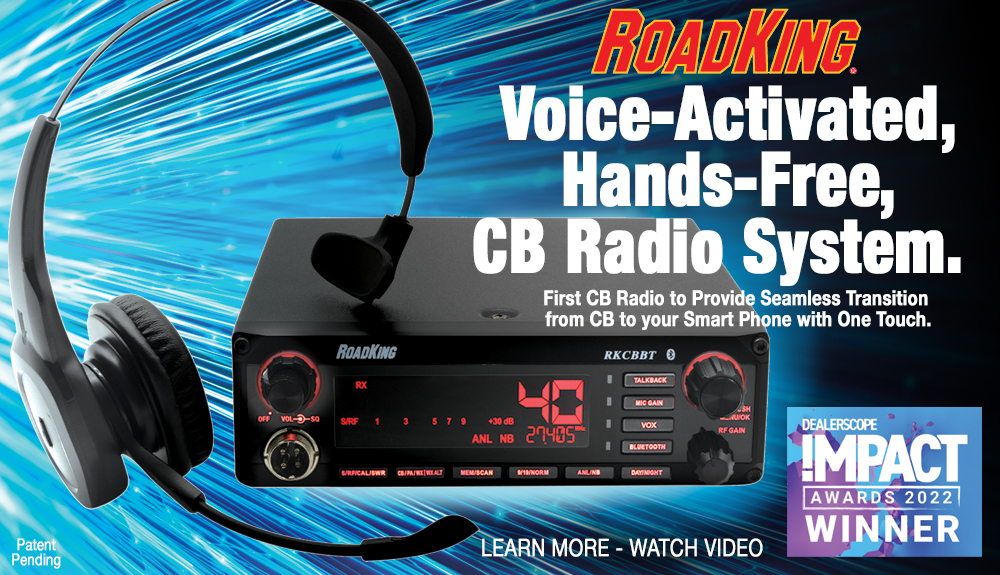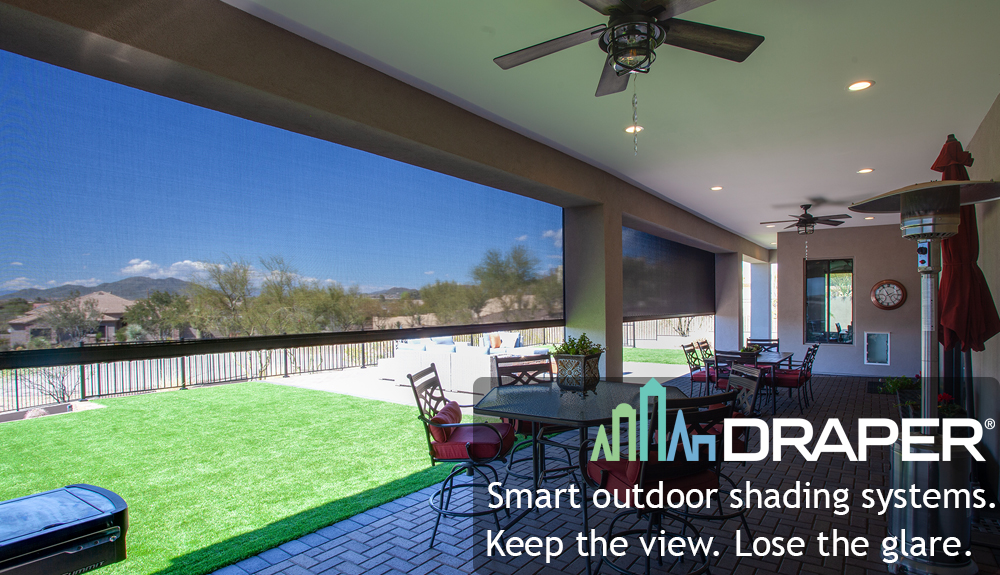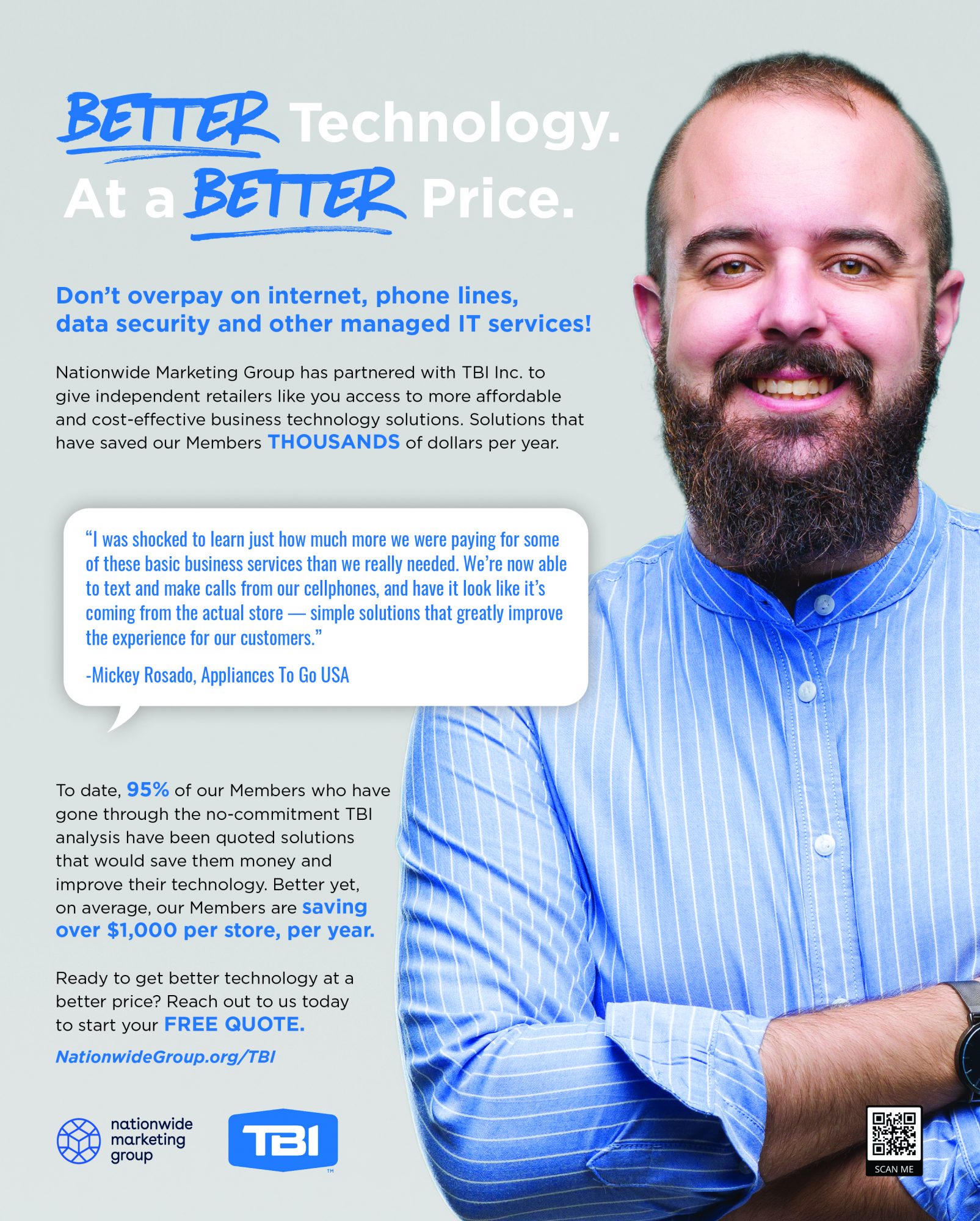CES 2022 came and went, even if not everyone who was originally planning to go did that. Even so, it was a success in terms of new products, news, and networking, even of the digital variety. Our February issue rounds up Dealerscope’s coverage, but covers other important topics for this year, including what to expect from the Health & Wellness space, EV cars and their significance to retailers, and what tech upgrades consumers will be embarking on in 2022.
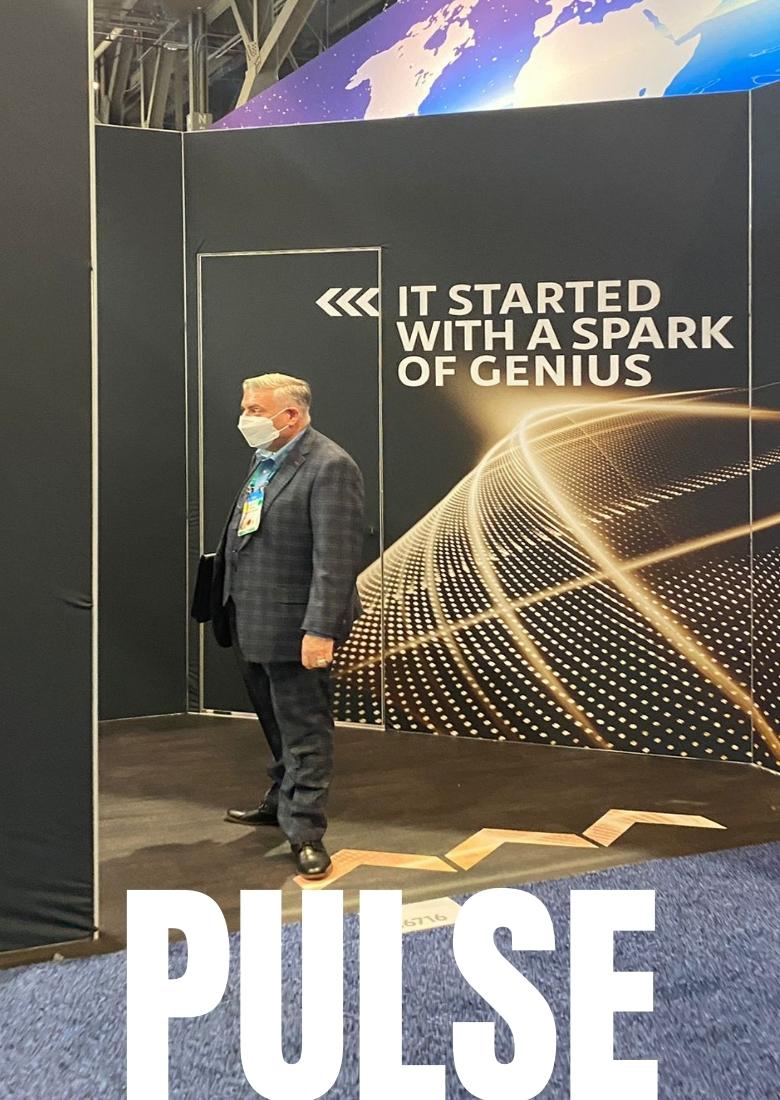

Did it really happen? CES 2022? I would say this will be remembered as one on my favorite CES events ever. There were no lines for the monorail or taxis, I was on time for my meetings and I was busy! In fact, I mentioned I was at the show on LinkedIn and requests flew in. I had meetings until 1am for two of the evenings. Incredible.
As we enter February, I am excited as I turn 58 (yes – its hard to believe and do I really look it?), we going to Nationwide Primetime, KBIS, BrandSource, and other in-person events. It reminds me of the importance of seeing each other. If we are safe and precautions are taken, then business can be done.
Our February Dealerscope recaps all the cool products our staff covered at CES 2022. In addition to the issue, please make sure you follow Dealerscope on LinkedIn to see all the “60 second” videos, such as the above one taken at the Hisense booth, that we shot at CES. Also, in this issue, we are look at “How Consumers Learned to Stop Worrying and Love Connected Products.” COVID helped us all with the need to use a lot of these products. We look at Tech Upgrades in 2022 and Entertainment trends this year as well. We investigate how Pinterest can be used with Consumer Tech and Retail. In the world of Appliances, we cover The Future of Food and how our industry has a big effect on this.
We love to always include great content on categories that are important to our retail; that’s why this month we are including The All-Season Guide to Selling Smart Locks. Security is an ever-changing category that can be very DIY and has evolved.
We are also presenting all the wonderful products and services that make up our Dealerscope 2022 IMPACT Award winners. I would like to congratulate each of you on on your innovations to further technology and make the retail space a great place for our consumers.
Any comments and/or questions – please contact me at tmonteleone@ctlab.media.
Best always,
Tony Monteleone,
Group Publisher of CT Lab Global Media
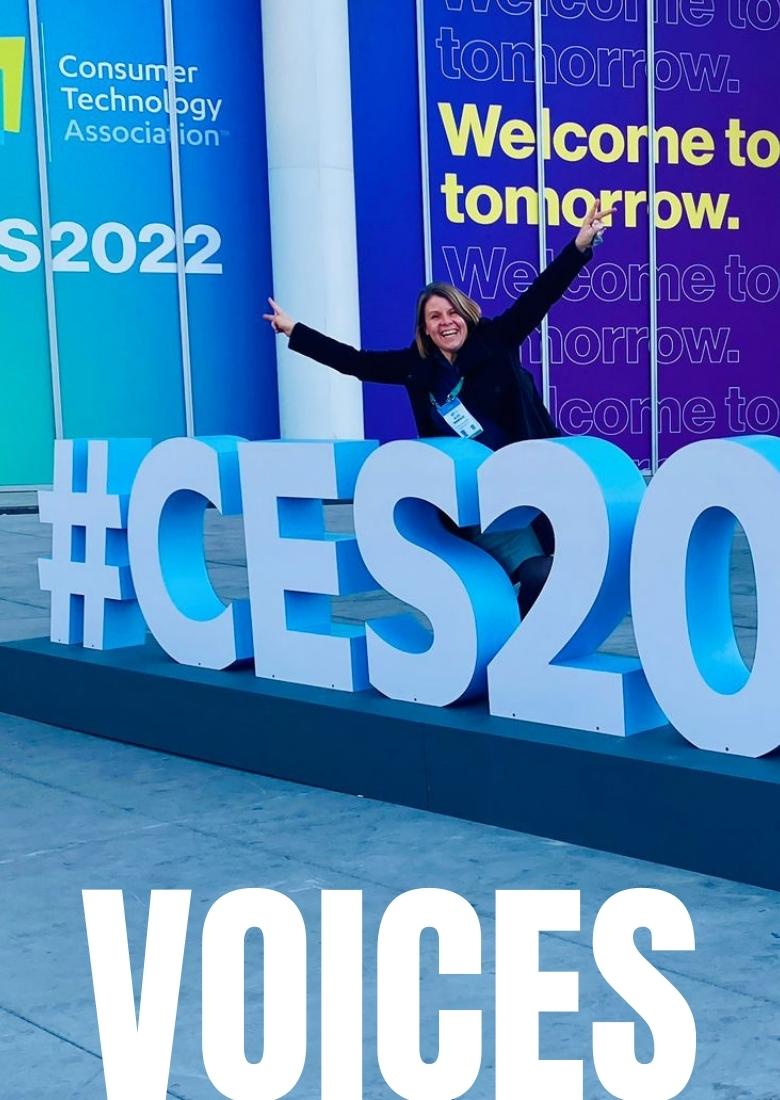
A WORD FROM OUR EDITOR IN CHIEF
The Benefits of Hybrid Shows

The emergence out of the pandemic is inevitably happening in fits and starts, and CES 2022 was no exception. More than that, it was a case in point.
Despite much fanfare and more exhibitors (2,400) than were expected as recently as November, CES 2022 fell prey to the last-minute curveball of the Omicron variant. While a good chunk of usual attendees to the show wasn’t going to go in person anyway, another good chunk, including many of those at this magazine, had planned to go in person.
But just a couple of weeks before the show was due to start, Omicron started to multiply exponentially – representing 73 percent of U.S. cases by December 20th – and raised the fear quotient around COVID once again. Omicron raised not only health concerns, but also simple logistical hurdles around travel, particularly for international attendees. And just like that, major company after major company – Amazon, BMW, Lenovo, Microsoft, Panasonic to name a few – started to pull out of at least in-person presence at the show. Stalwarts such as Samsung and Sony didn’t waver, and those who attended were able to get to see some of those innovations up close and in-person.
Since the show was hybrid already with a significant digital version, it wasn’t too hard to still do those announcements. The Dealerscope team opted to do a hybrid version of its coverage as well, with half the team going to Las Vegas and the other half working remotely. It turned out to be a decent strategy, in the end, allowing the team on the ground to take meetings, get hands-on with products, attend events that had no digital option, and shoot images and videos for our social media channels (such as the clip of CT Lab Group Publisher Tony Monteleone trying out a pair of Solos smart glasses). Some companies, such as Lenovo, held smaller in-person briefings in New York that required on-site testing and were limited to one attendee per briefing, which we were able to go to.
Overall, we likely would not have been able to do this had there not been a robust digital option for CES 2022, so kudos to the CTA and CES team for putting a lot into that. Kudos also to the CTA for implementing the Web Summit platform, which provided an excellent interface for viewing and scheduling the various press conferences, panel discussions, and exhibitors. In addition, the platform’s “Mingle” function, which is essentially a speed-dating-Chatroulette-type video chat for conferences, actually works if you are there to network. It’s not so great for the serendipitous conversations with people you know, but for meeting new business contacts of interest, it’s as good as any greeting at a booth or other event.
In addition, most exhibitors were available for one-on-one virtual appointments and booth tours, which arguably were more effective for our purposes since we were able to ask the questions we wanted in the time we needed, without having to compete with other people in real-time on the show floor. It has already generated stories and podcasts and will continue to do so in the coming months.
We hope that CES keeps this side of the show in play regardless of where the pandemic goes in the future. As anyone who has attended CES in the past knows, getting from one part of the show to the other just takes too long. One can spend an entire day just trying to get to one appointment, which just doesn’t work for those of us who have to cover so many different aspects of technology.
And let’s face it, technology is everywhere, so as essential as the TVs in the Las Vegas Convention Center and the digital doodads in Eureka Park at the Sands Convention Center are to us, so are the e-commerce, advertising, and other companies way at the other end of the Strip at the Aria C Space. I hope these press conferences, meetings, and booth tours are held virtually in the future as well as in person. I can see a future where we and other attendees who are physically at the show might also just go to the digital stream version of a press conference or exhibitor meeting rather than try to get there in person.
Digital success aside, the in-person show was still a hit for many, despite reduced numbers (45,000 attendees, per the CTA). The members of the Dealerscope team who did go to Las Vegas in person reported that it may well have been the best CES ever, if the relief from waiting in line or the ease of meeting with people was any indication. And for important media events such as Pepcom Digital Experience and ShowStoppers, the bulk of which were in-person, the opportunity to see exhibitor products up close and in person was key, and elicited a fair amount of FOMO for those of us who worked remotely. But given all the products, news, and events that happen at CES even in a normal year, FOMO sort of comes with the territory. We look forward to experiencing it next year again, with COVID-risks diminished and with the bulk of attendees in Las Vegas.

Tom Samiljan

IMPACT AWARDS
The 2022 Dealerscope
IMPACT Awards
Meet the most innovative, practical,
and likely-to-drive-sales new tech products,
as voted on by our editors.
Dealerscope’s annual IMPACT Awards recognize exceptional products in the consumer electronics industry that are innovative, practical, and, most importantly, help to drive sales on the showroom floor and online.
The variety of product categories runs the gamut from appliances and accessories to hardware, gadgets, and services. The main stipulation was that all products be new.
This year’s awards were chosen by tallying the votes of our entire team here at Dealerscope, with four special editors’ awards chosen by individual editors.
With that in mind, we proudly present to you the 2022 IMPACT Award winners.
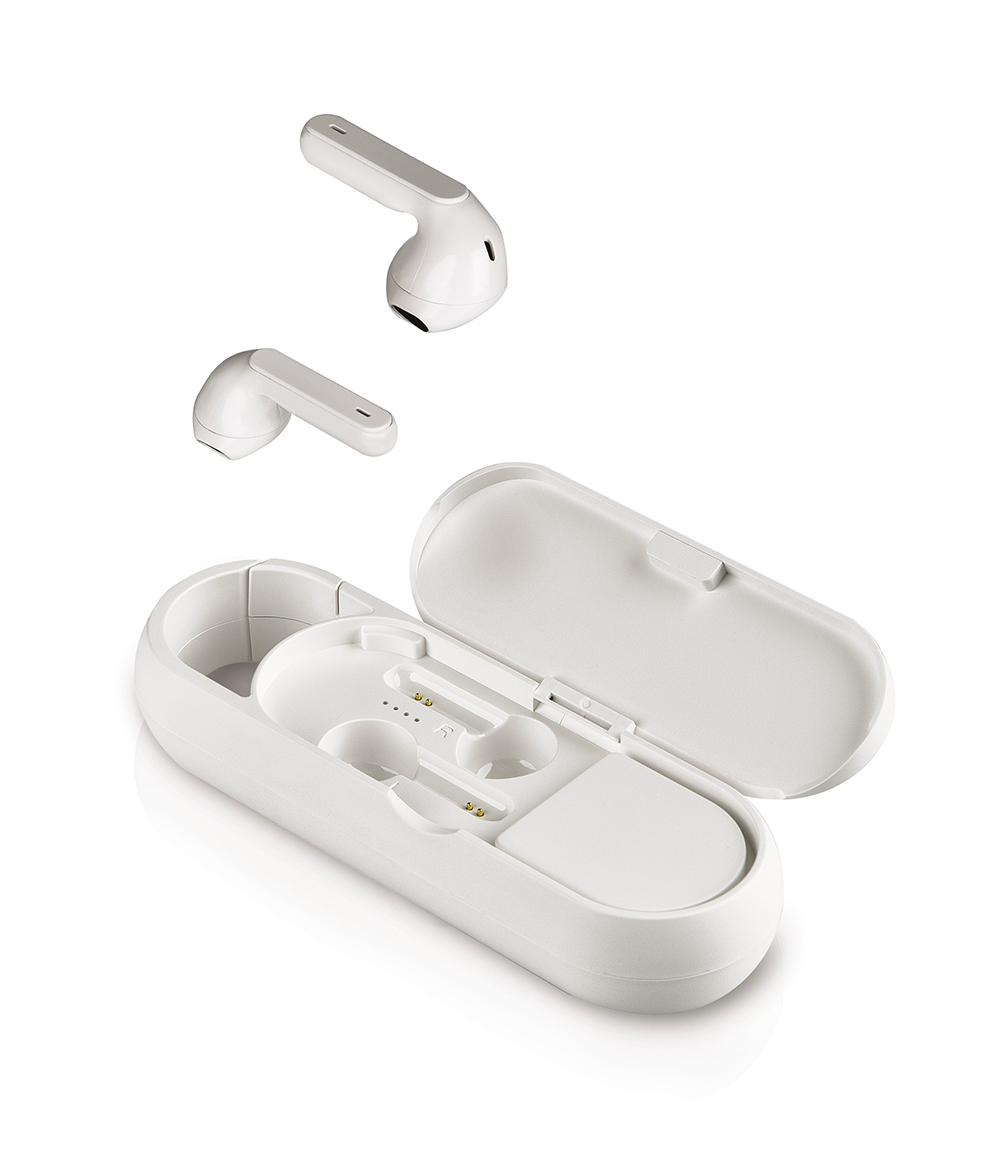
Acoustic Research DUO Wireless Speaker
AR’s DUO Wireless Speaker/Earbuds takes the concept of all-in-one, pioneered in other sectors of consumer technology, and successfully adapts it with equal success here. It combines three highly desirable functions — wireless speaker, Bluetooth 5.1 earbuds, and integrated charging case — in a small-footprint product. Result? Hours of listening pleasure. And its integrated carabiner only increases the appeal.

After, Inc. QuickSuite
This multi-module warranty platform is a problem-solver on several levels at every point in the post-sale cycle. In brief, its elements include QuickReg QR-based product registration technology; QuickCover software that allows businesses offering protection programs to offer service contracts online across all eligible products; QuickClaim, which keeps track of events related to product returns; QuickInsight analytics software; and QuickRenew, which helps companies send replacement products to customers on defined cycles.
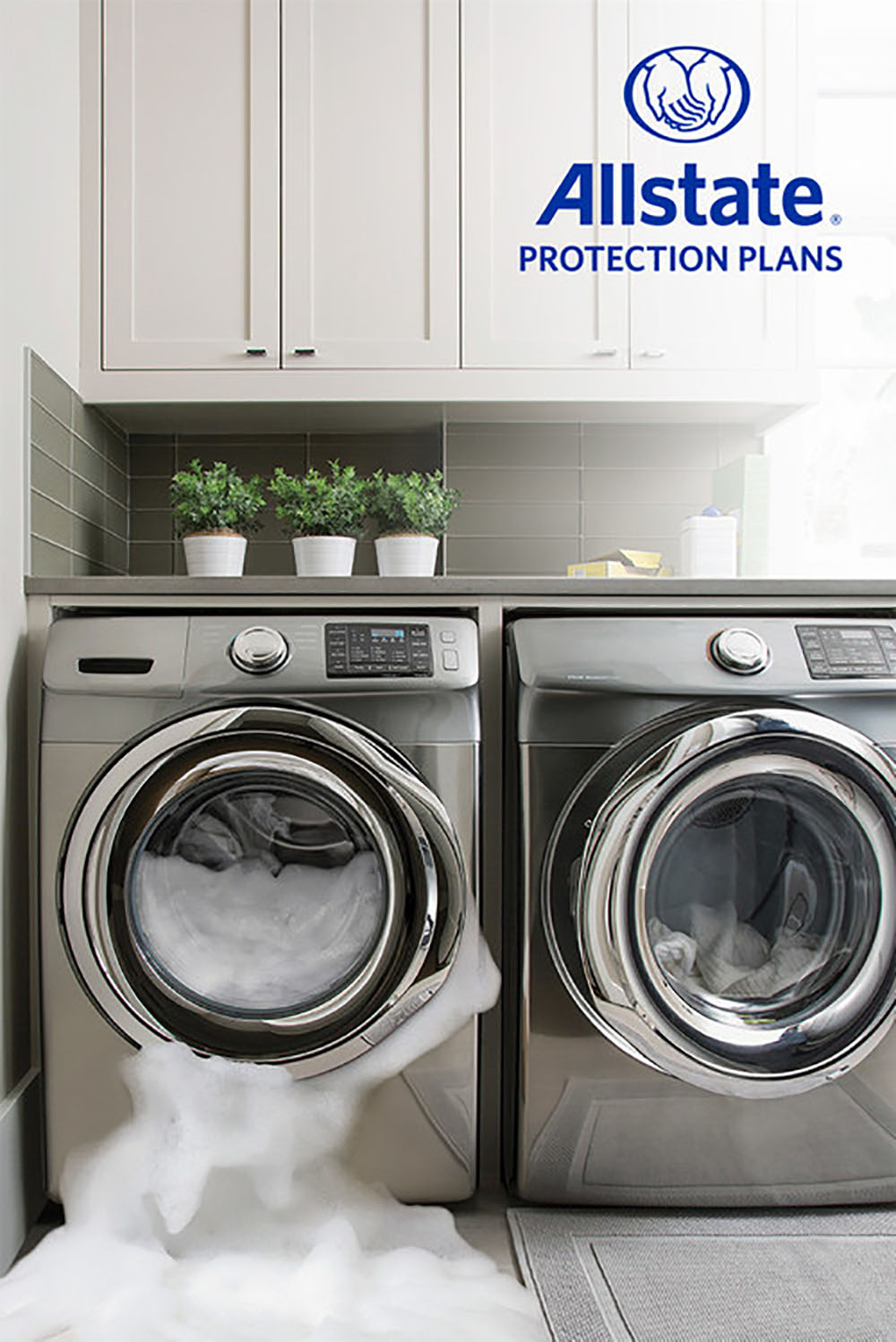
Allstate Protection Plans Express
Allstate Protection Plans, formerly known as SquareTrade, offers protection plans for retailers and e-commerce partners, applying to everything from consumer electronics products to appliances to furniture. The plans utilize an API known as Falcon API, making it easier for retailers to avoid complexities that have prevented them from offering such plans before.
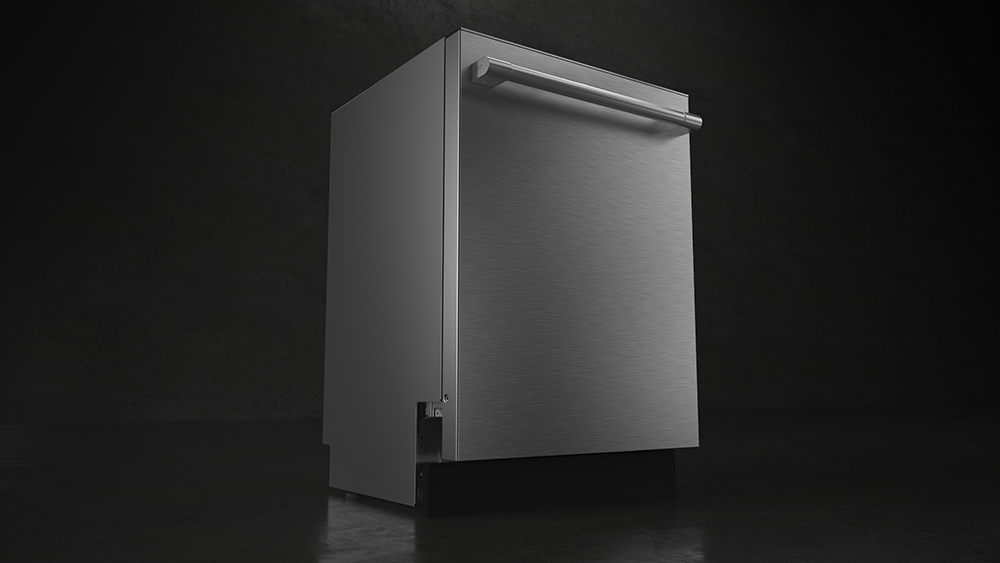
Beko Home Appliances DDT39434X CornerIntense Dishwasher
The Beko DDT39434X is one of nine dishwashers in a lineup that features CornerIntense, a Beko-patented technology that replaces the traditional circular spray arm with a rectangular design to deploy water and detergent to every spot in the washtub – even the corners. CornerIntense, EverClean, DeepWash, and SelfDry are new technologies that combine with Beko’s existing features to create this powerful and convenient dishwasher.
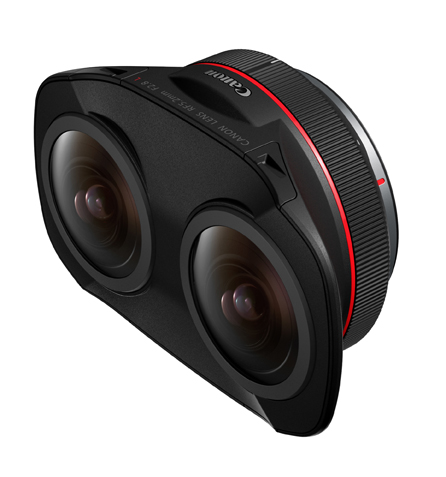
Canon’s RF5.2mm F2.8 L Dual Fisheye Lens
This lens imitates the immersive VR experience with its 190-degree field of view. During filming, the user will feel as though they are wearing VR goggles, which eliminates the need to sync and stitch multiple video files to create an immersive VR video.

FIBBR Prime A8K HDMI Fiber Optic Cable
This FIBBR product is for installs where rugged cable is a must. It has a “shield” of armor with zinc alloy and aluminum alloy housing that protects internal fiber and copper wires – succeeding where less well-shielded wires might fail. It is designed to support massive 48Gbps bandwidth, and multiple signals, including 8K (7680 x 4320) at 60Hz and 4K (3840 x 2160) at 120Hz; Dynamic HDR; HDCP 2.2/2.3; 12-bit RGB 4:4:4; and Dolby Vision — and eARC is also supported.
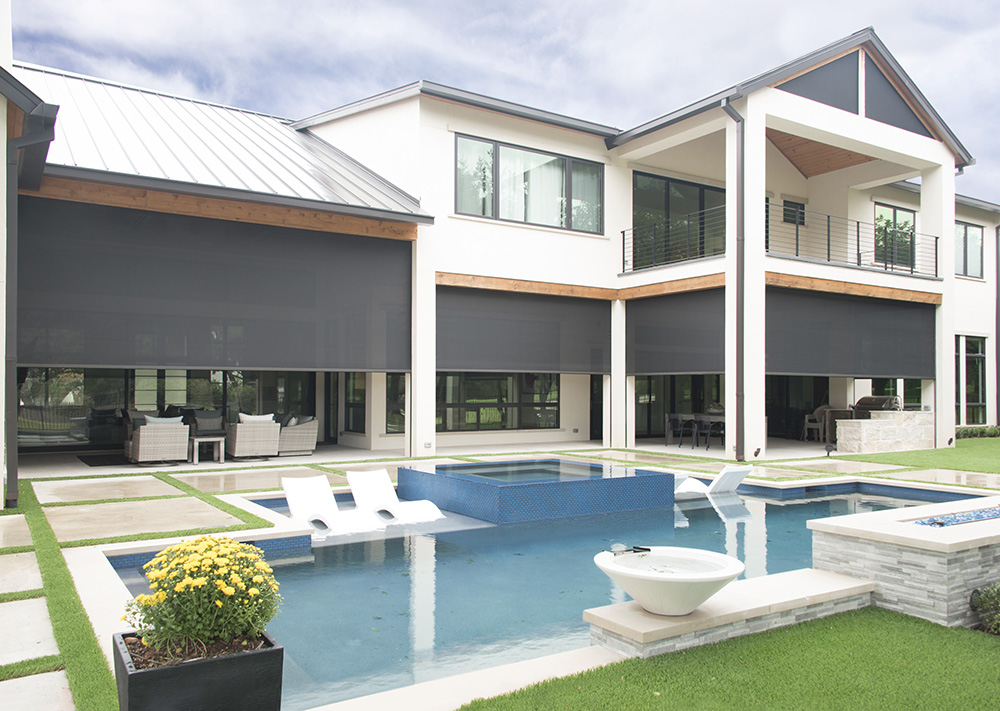
FlexShade Zip
From Draper Inc., comes the FlexShade Zip, an outdoor shade that can be integrated directly into smart home systems. This outdoor shade is designed to be used on windows, patios, or pergolas. When fully deployed, the FlexShade Zip leaves no gaps, which creates a space that is not only glare-proof but also resists rain, wind, and insects.

Hisense L9G TriChroma Laser TV
Hisense’s latest ultra-short-throw projection TV is the L9G TriChroma Laser TV, which features the company’s TriChroma laser engine. The company says that the TV’s red, green, and blue laser light sources offer more color than even OLED TVs, and it can project an image of up to 100 inches, on one of two offered screen options. The L9G runs the Android TV OS platform, with access to all major streaming apps.
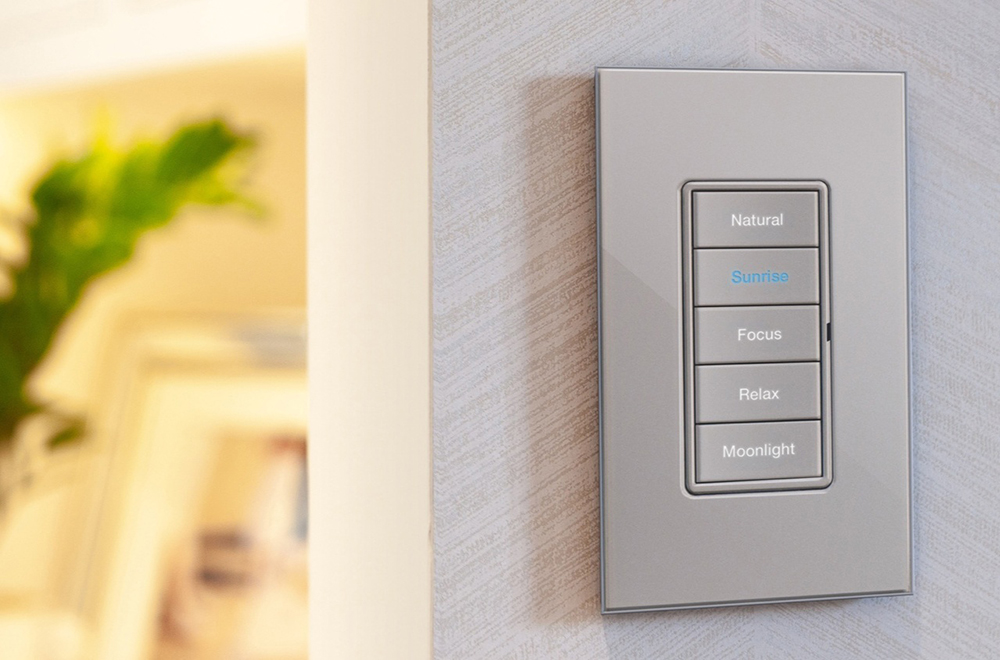
Legrand Vantage LHUMAN Human-Centric Lighting
The Vantage LHUMAN human-centric lighting solution mimics the Earth’s natural lighting cycle indoors, giving homeowners complete control of the lighting in their homes and on their schedules. LHUMAN integrates lighting control, motorized window shading, and color-tunable lighting fixtures to harness natural light when it’s available or render it artificially when it’s not. Vantage lighting control is also included, which works with a range of color-tunable lighting fixtures to provide full-color control and dimming capabilities.
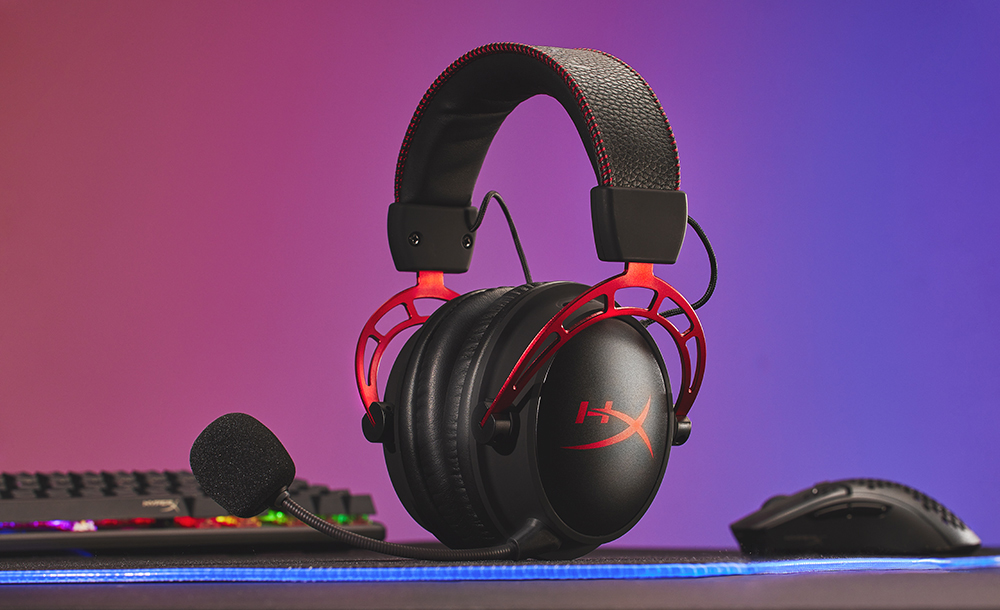
HyperX Cloud Alpha Wireless Gaming Headset
HyperX Cloud Alpha Wireless Gaming Headset features a whopping 300 hours of battery life, which amounts to over a week of continuous gaming in between charges. The headset features the HyperX Dual Chamber Drivers that deliver a range of audio clarity to give gamers precise spatial audio. Moreover, users can also utilize HyperX NGENUITY software to check battery life and customize audio options such as tuning the equalizer.

LG CordZero All-in-One Tower Auto Empty Cordless Stick Vacuum
Cleaning no longer feels like a chore with this vacuum, which easily converts into a handheld vacuum for those hard-to-reach areas. Meanwhile, its docking station not only charges but also has places for tools and extracts dust into its bin. Both the filter and the cyclone system are washable, which removes the need to buy replacement filters and reduces the amount of waste produced.
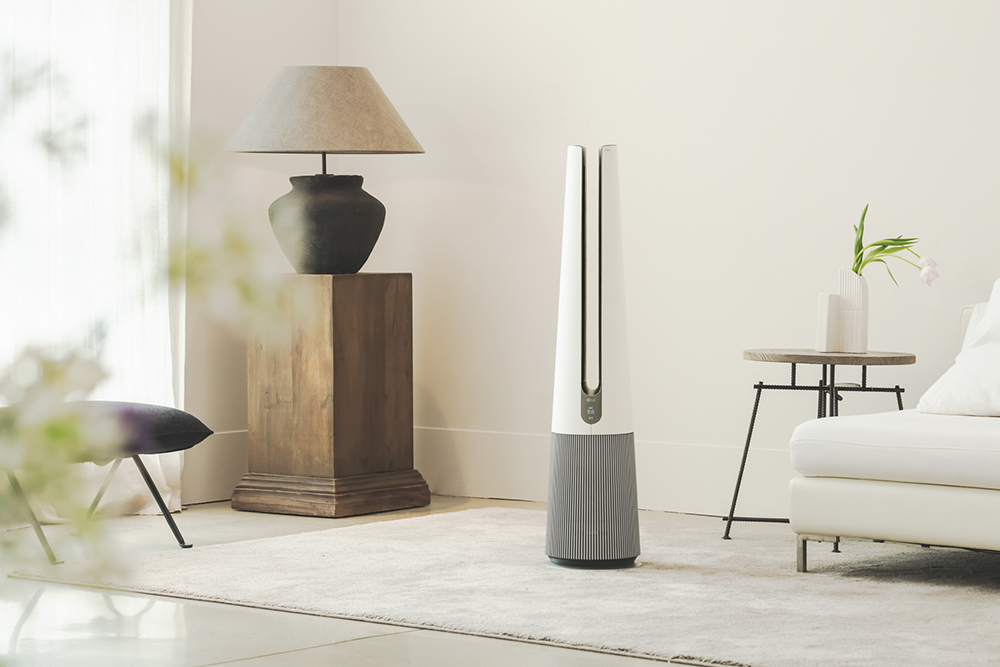
LG PuriCare AeroTower Air Purifying Fan
This product, which was featured as part of LG’s CES keynote, is many things at once: An air purifier, combined with a cooling fan and heater. Not only does the product provide pure air, especially for those working at home, but it features UVnano technology, which can kill bacteria. It can even be controlled with the LG ThinQ app.
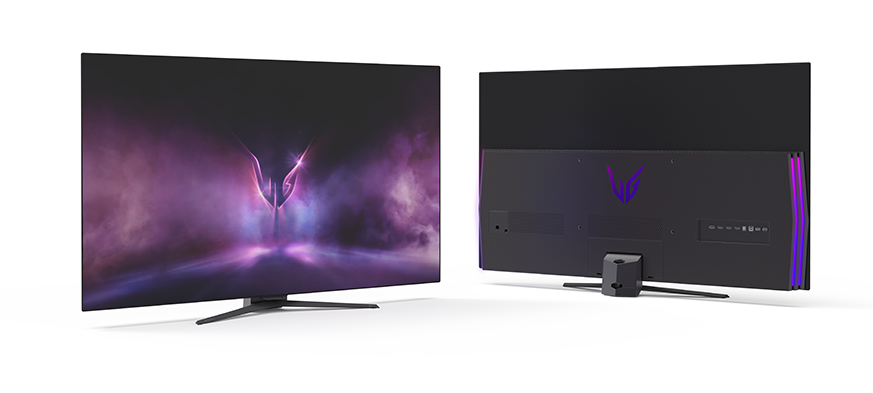
LG UltraGear 48GQ900
The UltraGear 48GQ900 is LG’s latest gaming monitor. This monitor utilizes OLED technology, which can produce colors encompassing 98.5 percent of standard color gamut DCI. The OLED technology also yields higher speeds for gaming and eliminates the halo effect caused by LCD monitors. The UltraGear 48GQ900 is also equipped with HDMI 2.1 capability to support VRR and syncs the Hz of the display to pair with the frame rates of connected hardware, creating a seamless gaming experience.
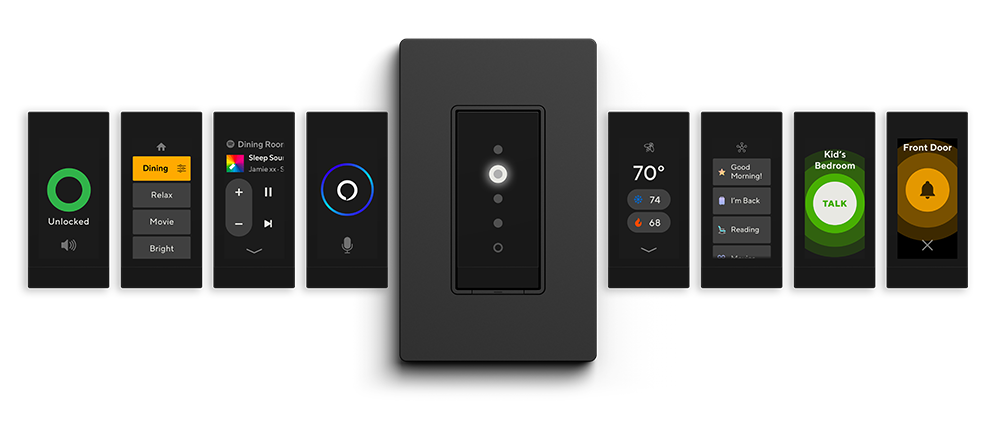
Orro One Pro
A unified, smart home living system in the form of a standard-sized light switch, Orro One Pro is a revolutionary system designed with human-centric technology. Along with being compatible with most other smart home systems, the Orro One offers lighting and home control with a touchscreen interface, voice-activated controls, and daylight and motion-sensing technologies. This way, the Orro One can react to the surrounding light, offering more illumination when needed and saving energy overall.
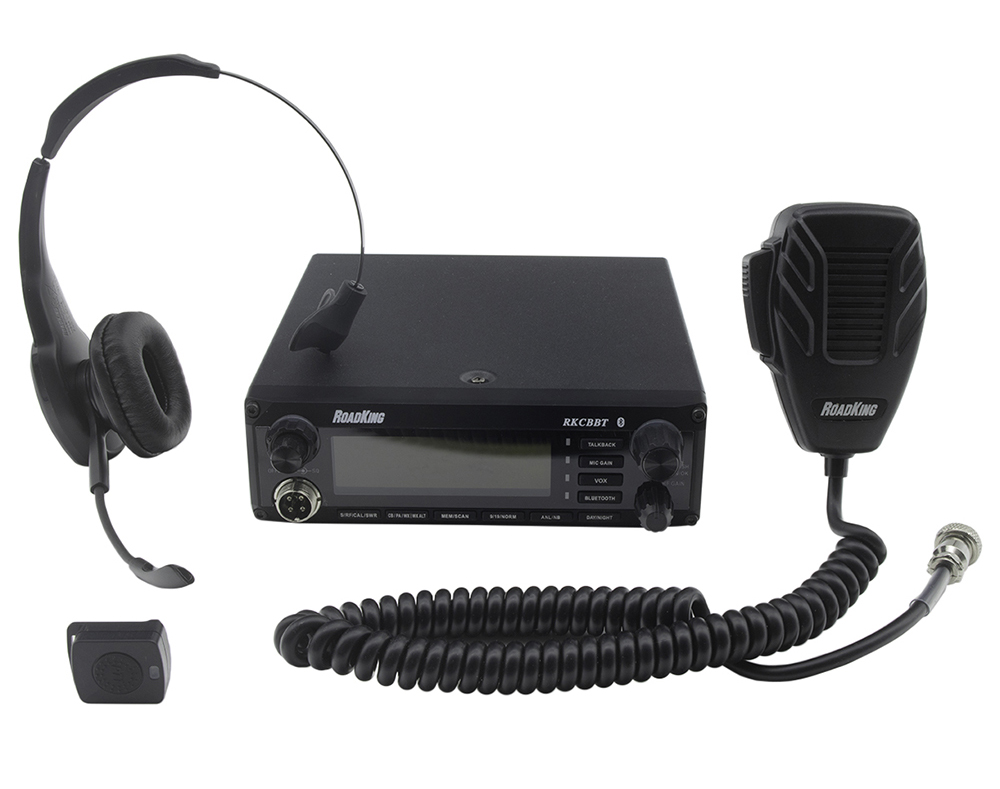
RoadKing Voice-Activated Hands-Free CB Radio
CES often features new spins on older, established technologies, and that’s certainly the case with the CB Radio. RoadKing is offering a new, voice-activated version of the truck cabin staple, which is meant to pair with the RoadKing 940 Bluetooth headset. The product comes with an external handheld microphone, a seven-color display, and NOAA weather alerts.
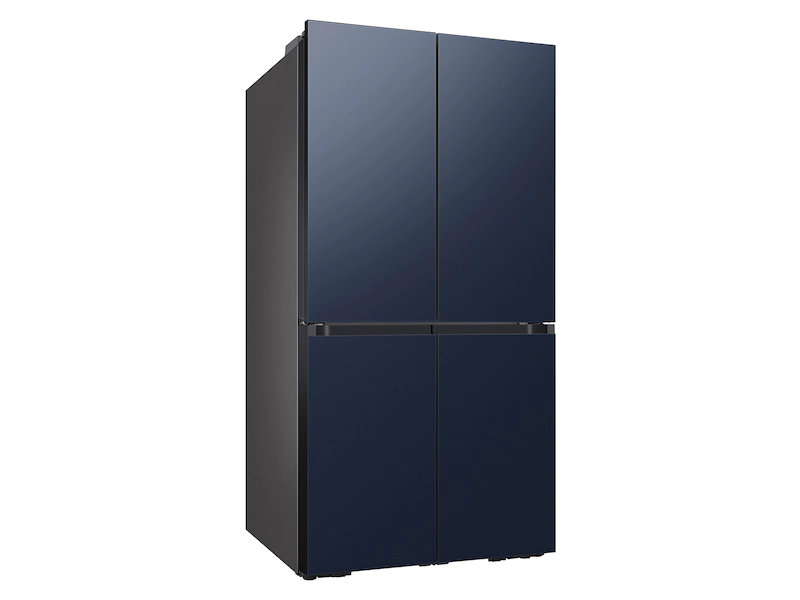
Samsung’s Bespoke Four-Door Flex Refrigerator
This customizable refrigerator comes in eight color options (white glass, sky blue glass, grey glass, navy glass, rose pink glass, champagne rose steel, navy steel, or matte black steel) and consumers can choose any color combination they want. The lower-right space can be converted to a fridge or freezer through the settings, which is helpful when you run out of freezer space.

Samsung The Frame TV
Samsung’s newest The Frame TV has only gotten better than earlier versions. It has 10 times more image capacity, and is 45.6 percent more svelte than before. It sports a new beveled-edge bezel style and edgy new color choices like Brick Red. There’s a shelf add-on option. And, best of all, as an on-demand art curator, it “learns” the owner’s tastes and suggests artwork to fit his or her aesthetic.

Samsung Terrace Full Sun
Samsung’s Terrace Full Sun 4K QLED TV is weather-resistant, durable, and as feature-filled as the best Samsung indoor TVs — with the benefit of its enhanced panel being optimized for vivid, full-color performance in direct sunlight, boasting 1,700-plus-nit brightness levels. It is the industry’s first outdoor TV to be verified for outdoor visibility performance by Underwriters Laboratories. This set sports an anti-glare screen, and the TV is IP55-rated, ensuring it will withstand the elements regardless of outdoor conditions.
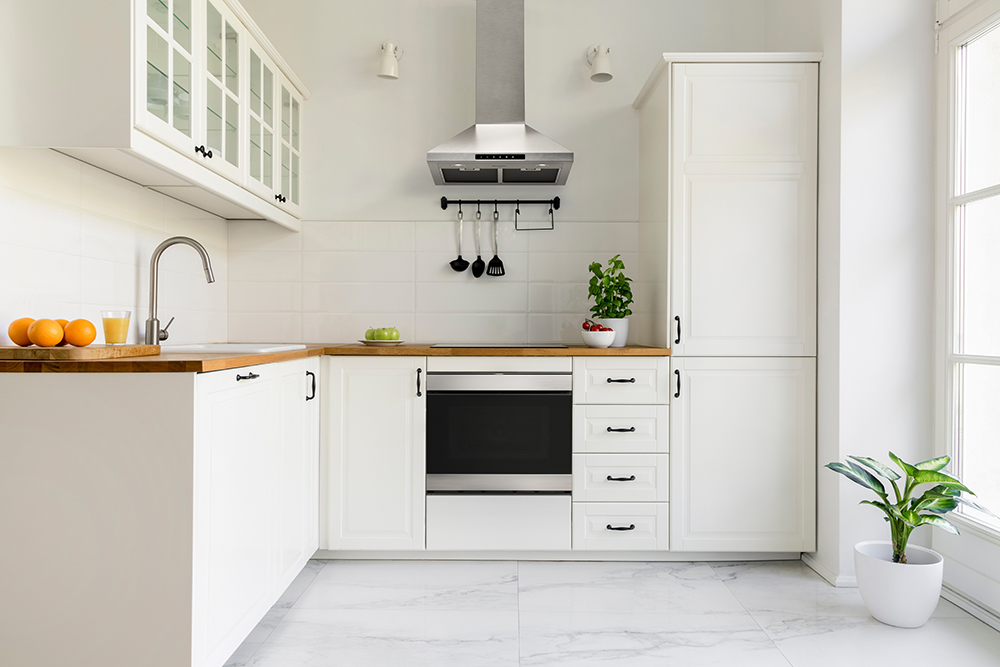
Sharp Home Appliances Built-in Smart Convection Microwave Drawer Oven
The Sharp 24-inch Built-In Smart Convection Microwave Drawer Oven boasts innovative dual convection fans for turntable-free baking, roasting, grilling, and air frying. For optimal smart home compatibility, the microwave drawer works with the Sharp Kitchen app and Amazon Alexa. Other features include touchless “easy wave open” technology, bright LED lighting, built-in airflow, and concealed touch-glass controls.

Shokz OpennComm Stereo Bluetooth Headset
The OpennComm Stereo Bluetooth Headset from Shokz is designed for people who need professional-quality audio and communication services while on the go. The headset features 16 hours of talk time and bone conduction technology to deliver high-quality audio to the user while leaving them in tune with their surroundings.

Shokz OpenComm UC
The OpenComm UC from Shokz is the upgraded version of the OpenComm headset. The OpenComm UC added a USB-A Wireless Adapter to create increased compatibility with work devices. The headset also features a DSP noise-canceling boom microphone to provide professional-quality audio no matter where the user may be calling into a work meeting from.
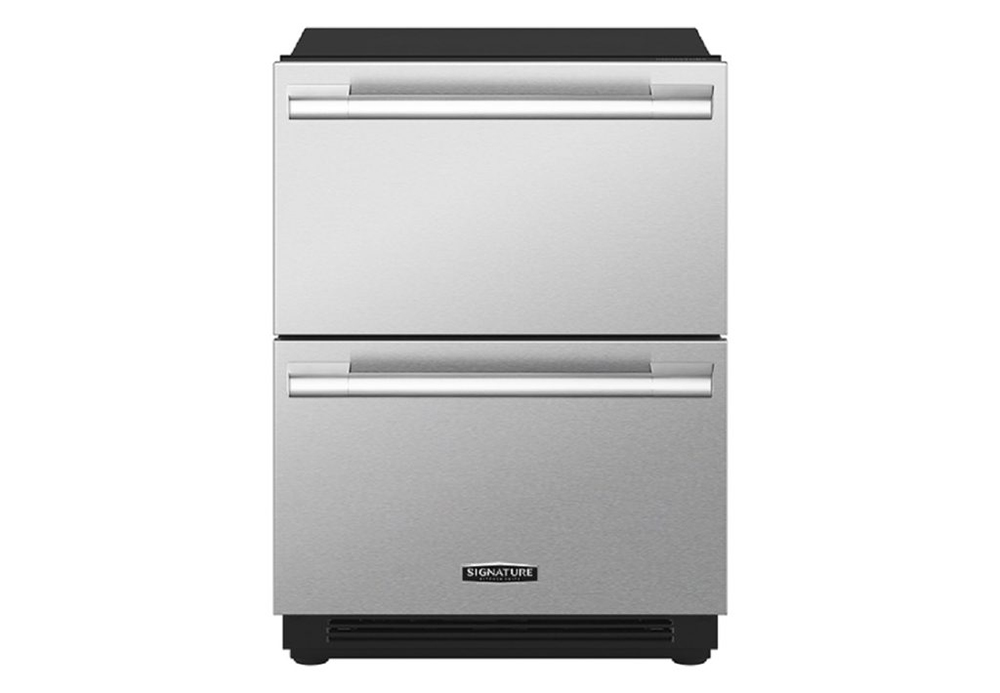
Signature Kitchen Suite Undercounter
Convertible Refrigerator/Freezer Drawers
Unique to this refrigerator/freezer from SKS are two drawers that operate independently and can be used as either a refrigerator or freezer, depending on the homeowner’s need. This unique refrigerator redefines food storage due to its precision for preservation and its convertible drawers, which include six Multi-Temp Settings: Pantry, Fridge, Bar, Seafood, Meat, or Freezer. The unit is designed to minimize temperature fluctuations and help keep food fresher and longer with flexibility from -7 to 50 degrees Fahrenheit.
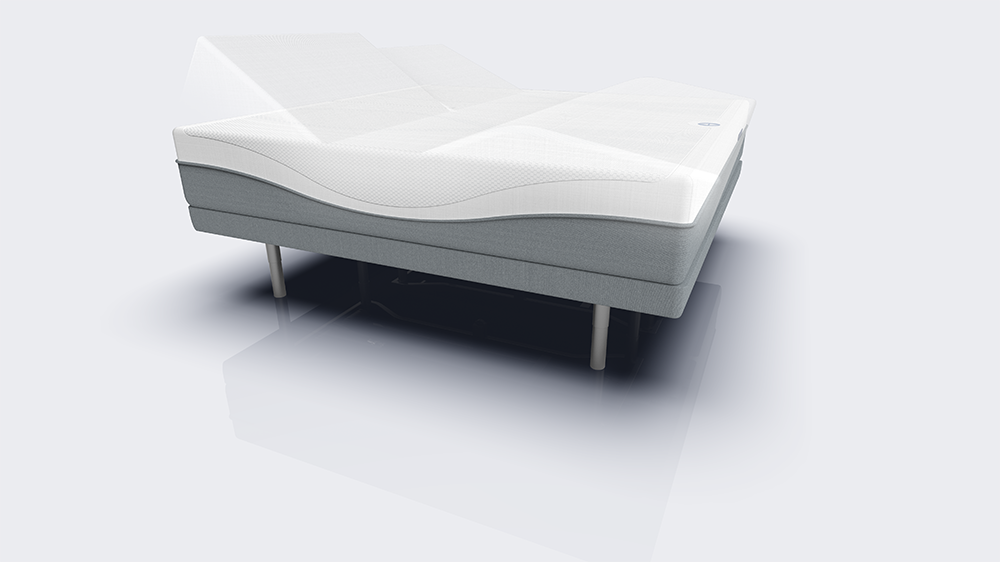
Sleep Number 360 Smart Bed Technology Platform
You may know the Sleep Number bed, but the company’s new platform offers advanced sensing capabilities, which can monitor the user’s sleeping habits over the long term, even as such habits change. It can even notify the sleeper of illnesses and other conditions. It even raises the bed when the user is snoring. The product was developed with the help of over 13 billion hours of proprietary sleep data.

Speck Presidio Pro Folio
Presidio Pro Folio from Speck is an all-in-one solution for organizing and protecting Apple’s MagSafe charging system, which was released back in 2020. The folio case holds and protects the MagSafe charging station for carrying around but then converts into an adjustable stand that can be used to charge the iPhone (and also prop it up for desktop use).

Victrola Revolution GO Portable Rechargeable Record Player
It seems like record players have been “back” for nearly as long as they were gone. But Victrola is out with a new take on the category, combining old technology with new. The Revolution GO is a portable and rechargeable Bluetooth record player that users can take on the go. It also allows users to play their records through Bluetooth or headphones. It even comes with a guitar strap, for carrying it around.

Withings ScanWatch
The ScanWatch from Withings is a smart wearable that is designed to monitor health metrics to catch issues such as heart failure and atrial fibrillation in early stages. The smartwatch is FDA cleared for both ECG and SpO2 measurements and performs a heart rate scan every 10 minutes using a PPG sensor. On top of monitoring cardiovascular health, the ScanWatch also functions as a fitness wearable, sleep monitor, and smartphone.

EDITOR’S CHOICE AWARDS
The 2022 Dealerscope Editor's Choice
IMPACT Awards

LG Signature OLED 88Z2
This 88-inch TV provides nonpareil picture quality that lives up to its ultra-large-screen real estate. With it, LG has again proven to be a master of OLED engineering. Central to its impressive performance is the LG Alpha9 Gen5 8K AI Processor, featuring Deep Learning AI using algorithms to seek out picture elements to optimize through backlight adjustments. Its 4.2-channel sound system also auto-optimizes audio based on the content playing on the screen – the icing on the cake.
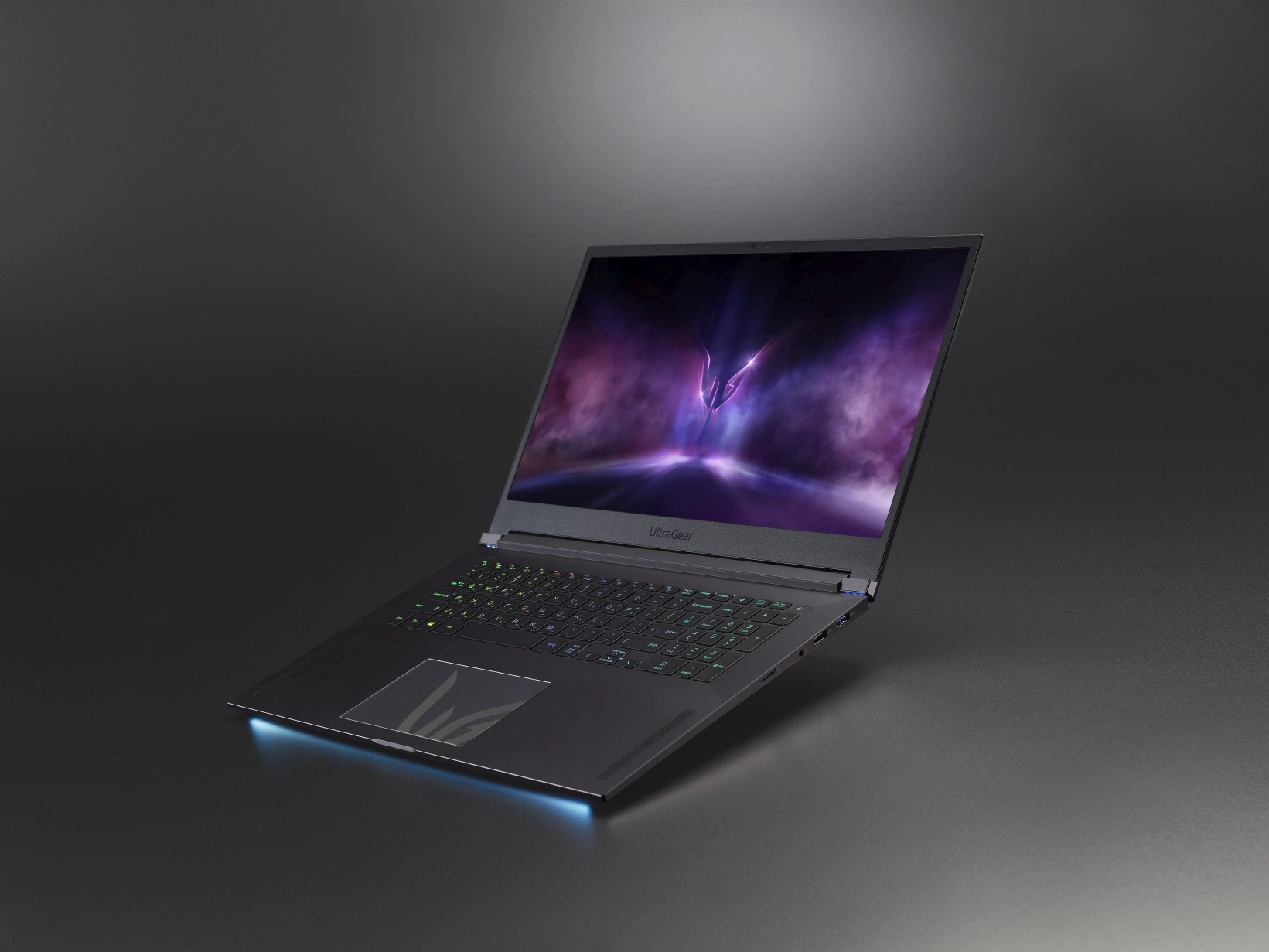
LG UltraGear 17G90Q PC
The UltraGear 17G90Q is the first gaming laptop to come from electronics manufacturer LG. The laptop is anchored by an 11th generation 8-core CPU and NVIDIA RTX 3080 graphics card, which make for quick and precise gameplay. Gamers can also fully customize their RGB keyboard and get into games with built-in 2-way speakers. This product will be available to purchase starting in early 2022.
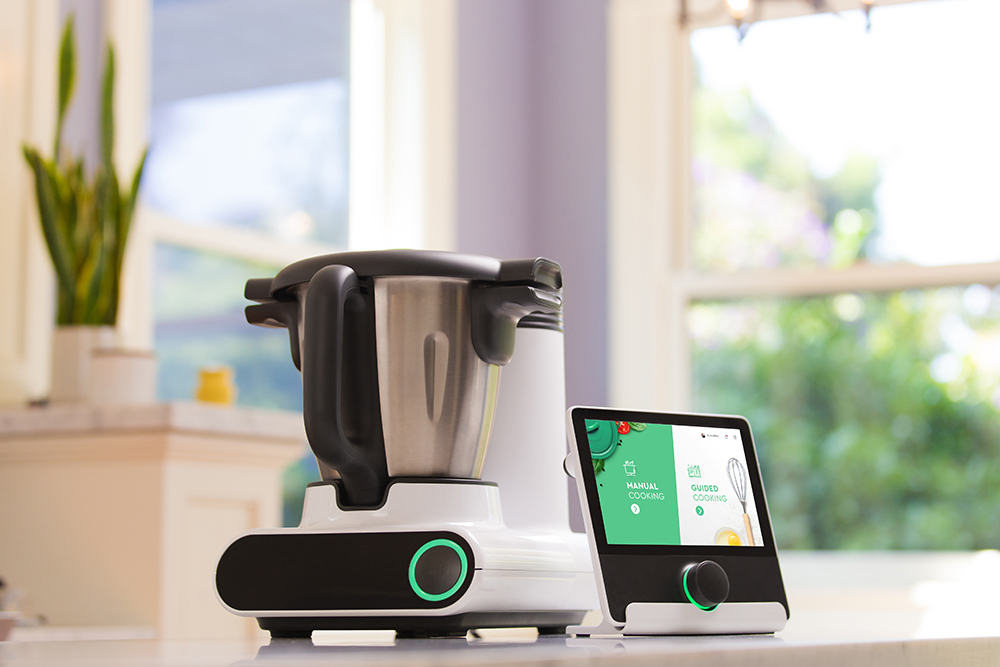
Multo CookingPal
This do-it-all cooking device is sort of a blender on steroids, or is it a souped-up food processor? It defies categorization, which is why we picked it for an award. Not only can this blender with a built-in scale and heating mechanism knead, steam, sautee, and, of course blend, but it is bad-cook-proof thanks to a database of step-by-step recipes that run from a Bluetooth-connected tablet. Experienced cooks can also benefit from its multi-cooking function capabilities. Never be stuck at the stove again stirring risotto for 45 minutes; CookingPal will do it for you!
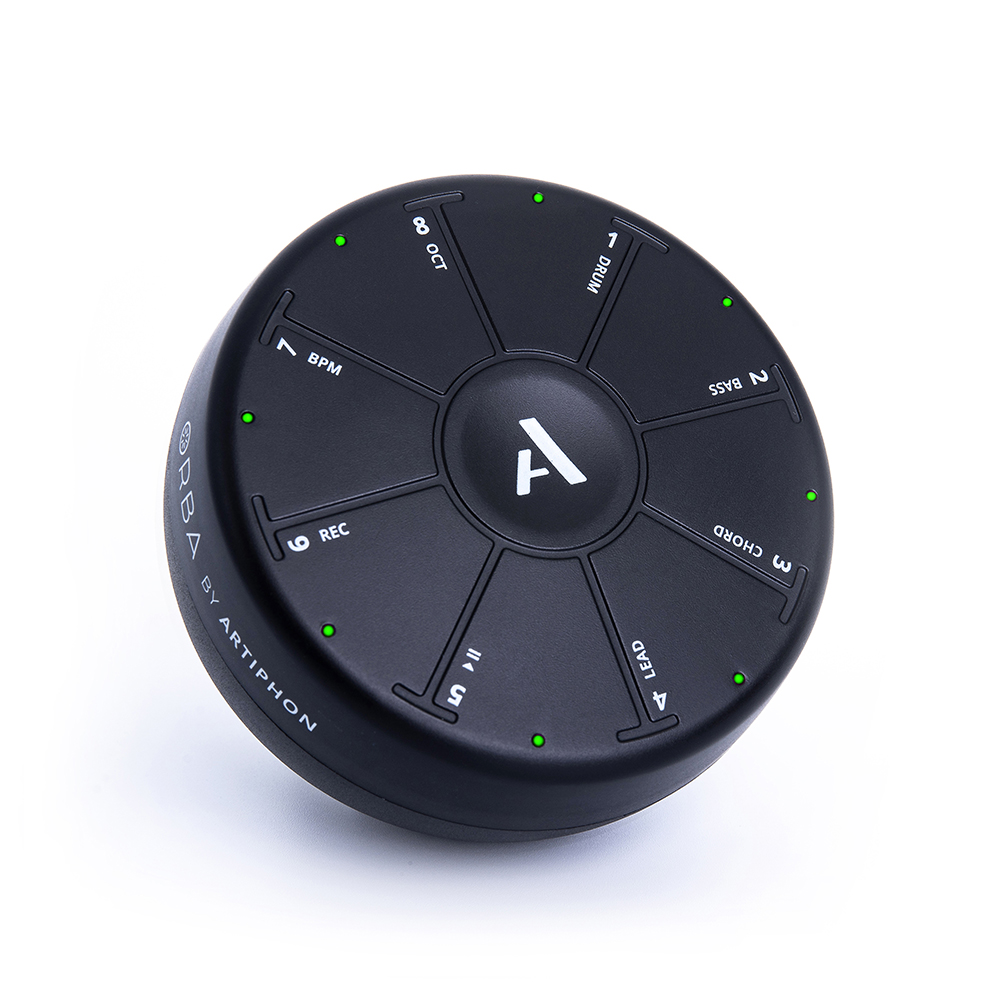
Orba
Music can be made anywhere you go with Orba, a handheld synth, looper, and MIDI controller. Users can layer drum, bass, chord, and lead parts to create beats and songs to play back through the built-in speaker; or, they can listen through headphones. The synth engine can be controlled through gestures: Users can tap, press, spin, radiate, tilt, shake, slide, vibrato, move, and bump to make music.

BEST OF CES 2022
Online (and Off) With the Show
Despite last-minute in-person pull-outs, CES 2022’s news, products, and even virtual networking were a success.
By TOM SAMILJAN
CES 2022 has come and gone and in the end, despite there being only 45,000 in-person attendees, it was a success in terms of new products presented and topics discussed. Dealerscope’s coverage mixed an in-person team on the ground and a remote team covering the show digitally. In the end, there was a lot to see, hear, learn, and source for stories throughout the year. Here’s a brief recap of our coverage, along with links to the stories.
As more and more connected devices enter more and more homes, the need for interoperability, privacy, and security increases. In between discussions of 5G and Wi-Fi 6, companies and panels immersed themselves in discussions around the intersections of interoperability and security. Though announced two years ago at CES, Matter, an interoperability standard from a consortium of companies including Amazon, Google, and (also known as the Connectivity Standards Alliance), made a more prominent debut, which makes sense given that it’s due to come out this year. Matter makes it easier to combine connected devices from different smart home ecosystems, which comes in handy if users have, say, a mix of Alexa, Google Home, and Zigbee devices in the home. And several companies from Belkin and Samsung to Schneider Electric, announced products that would be compatible with Matter.
The Z-Wave Alliance, which operates the Z-Wave standard, is not currently compatible with Matter, but its CEO, Mitch Klein, moderated a panel on the topic of smart home resilience, which covered everything from security to even Matter. One point that Klein made to The Verge last year was that Matter is not backwards-compatible, so consumers would have to buy new devices, from multiple ecosystems or otherwise, to partake of its interoperability benefits. Z-Wave also released its annual State of the Ecosystem report, which mostly focused on the rising interest in smart home capabilities in general, with a big focus on security, as well as the top most-wanted Z-Wave connected device categories: smart water shut-off valves, smart security systems, smart home control systems and hubs, chair or bed pressure sensors, and flood sensors and/or leak detectors.
Meanwhile, many companies showed off their smart devices for the home. Moen’s latest version of its Smart Faucet now lets users use hand gestures to adjust temperature and flow in addition to existing hand and voice controls such as on and off and water measurements for recipes. LG’s latest-generation FX Washer and Dryer features an updated version of its Artificial Intelligence Direct Drive (AI DD) that is also in the dryer for the first time. In the dryer, the AI DD automatically figures out the movement, temperature, and time depending on fabrics or types of clothes, as well as learns over time specific user drying preferences.
In addition to announcing its participation and plans to work with the Matter standard for interoperability, Samsung also updated smart capabilities on its line of Bespoke appliances with the launch of the Bespoke Family Hub, which essentially incorporates the SmartThings Hub software into a bezel-free touchscreen on its Bespoke refrigerator and lets users control other connected devices, stream TV and music, and look up recipes right from the screen via voice or touch. Samsung also announced that it would be adding Bespoke Front Load laundry pair.
Audio/Video
No matter how much auto, food, or space tech fills the show floor or headlines, TVs remain a core category at CES since this is how it all started. While there wasn’t too much in the way of earth-shattering news, the proliferation of HDMI 2.1-compatibility across more TVs will make a looming upgrade more compelling for consumers. Many new TVs from Samsung, Sony, LG, and the like will now do 4K gaming with all the realism thanks to HDMI 2.1 integration.
Sony unveiled a range of new TVs, not least some additional information around the new BRAVIA XR TV line, along with 11 models, but the intriguing new device is the BRAVIA CAM, a separate device that sits atop a television and literally senses when viewers have left the room and dims the display to save energy, in addition to automatically optimizing sound and video settings depending on where a viewer is positioned.
In addition to new Frame, QLED, and MicroLED models, Samsung unveiled a couple of intriguing new TV or video-related products. In addition to being made from recycled plastics, the new Samsung Eco Remote uses solar power and an RF harvester, which extracts energy from Wi-Fi router radiowaves. At its keynote, Samsung unveiled the Freestyle, a cute portable projector that resembles a track light and can project up to 100 inches on any surface, even the ceiling, auto-calibrating on the fly. One big plus of the Freestyle is that it has all of Samsung’s Smart TV capabilities built in. Speaking of which, Samsung also announced a slew of additions to its smart TV hub software, including a modified Home screen that offers links to a new Gaming Hub, among other new areas, that consolidates all of a user’s console and other games in one place. The new “Watch Together” feature lets users watch shows together, even if they are in completely different locations. Samsung is also adding an NFT marketplace that lets users browse, purchase, and manage NFTs, which can also be displayed on their TVs.
TCL announced new 4K and 8K TVs, including a 98-inch QLED model, its largest ever, that will cost less than $8,000. TCL is adding its entire line of 2022 TVs with either Roku TV or Google TV. For gamers, the company is upping refresh rates from 120Hz to 144z on some models, which will provide more realistic graphics and gameplay.
Hisense announced new devices in its laser TV lineup: The PX1-PRO TriChroma Laser Cinema and the L5G 4K Smart Laser TV, the latter of which is the latest upgrade in the L5 series. Hisense also announced new models in its ULED lineup, including the U9H, U8H, U7H, and UH6 Series, all of which now sport the mini-LED backlighting. Also notable, the bang-for-your-buck A7H, which delivers a whopping 85-inch screen for $1,700.
On the audio front, the news in headphones revolved around all the affordable, true wireless earbuds at affordable prices from companies such as Jabra and JLab. Turntables for broader uses and consumers also made a showing, with Victrola demo-ing its new portable Revolution Go turntable, which won both a 2022 CES Innovation Award and a 2022 Dealerscope IMPACT Award, and the Premiere V1 Turntable Music System, an all-in-one package with speaker and subwoofer that marks the brand’s entry into more premium music systems.
Most mindblowing? That would have to be the Noveto N1, a nifty portable speaker that uses beamforming technology to provide provide precise sound to anyone in a room, without anyone else in the room able to hear it. It’s perfect for anyone who needs to listen to music quietly, but doesn’t want to wear headphones for hours on end. (It won’t cancel noise, however.)
For the rest of our CES 2022 coverage, make sure to visit dealerscope.com/tag/ces

CE RETAIL TECHNOLOGY
January 2022 CE News

Shoppers Overstocked This Holiday Season | Did you have too many presents under the tree this past Christmas? One in five shoppers ordered more gifts than needed during the 2021 holiday season, according to research from Oracle. The reason may be that 45 percent of shoppers began preparing for the holidays as early as October, per McKinsey.
National Theft Spree Threatens Retailers | Retailers nationwide have instituted theft-prevention measures such as boarding their windows and keeping important products in lockboxes in response to a slew of high-profile “flash mob” robberies, including at three suburban Minneapolis Best Buy locations over Thanksgiving weekend, that have spread across the country. Concern among retailers is growing as these thefts have become more brazen and violent in recent months.


FTC Conducting Investigation into Supply-Chain Issues | The Federal Trade Commission has issued orders to Walmart, Amazon, Kroger, and other large retailers to submit information that may shed some light on what is causing disruptions in the supply chain by Jan. 14, 2022. The FTC hopes to understand the root causes behind these supply-chain issues, which have caused challenges for consumers and retailers alike.
Looking Ahead to Winter PrimeTime 2022 | Nationwide Marketing Group has announced that it will continue to focus on the Shopper Decision Journey at its upcoming Winter PrimeTime event on Feb. 5-8, 2022 in Phoenix. The event will feature a plethora of buying, educating, and networking opportunities ranging from a 90-minute PrimeTime Palooza shopping frenzy with real-time deals, to more than 100 hours of educational material from the Nationwide Learning Academy.


NRF Awarded Stay Against Biden Vaccine Mandate | Absent from President Biden’s most recent restrictions was the mandate for companies with more than 100 employees to fully vaccinate their workforces or implement weekly testing. This requirement was blocked after the National Retail Federation challenged the mandate’s legality in the Fifth Circuit Court of Appeals and was granted a stay. Meanwhile, New York City Mayor Bill de Blasio announced that the Big Apple would implement a vaccine mandate for private companies starting Dec. 14.
APPLIANCES
The Future of Food
There’s no doubt that do-it-all cooking robots will be a part of the equation, but some even think that tomorrow’s model kitchen will be no kitchen at all.
BY ERINN LOUCKS
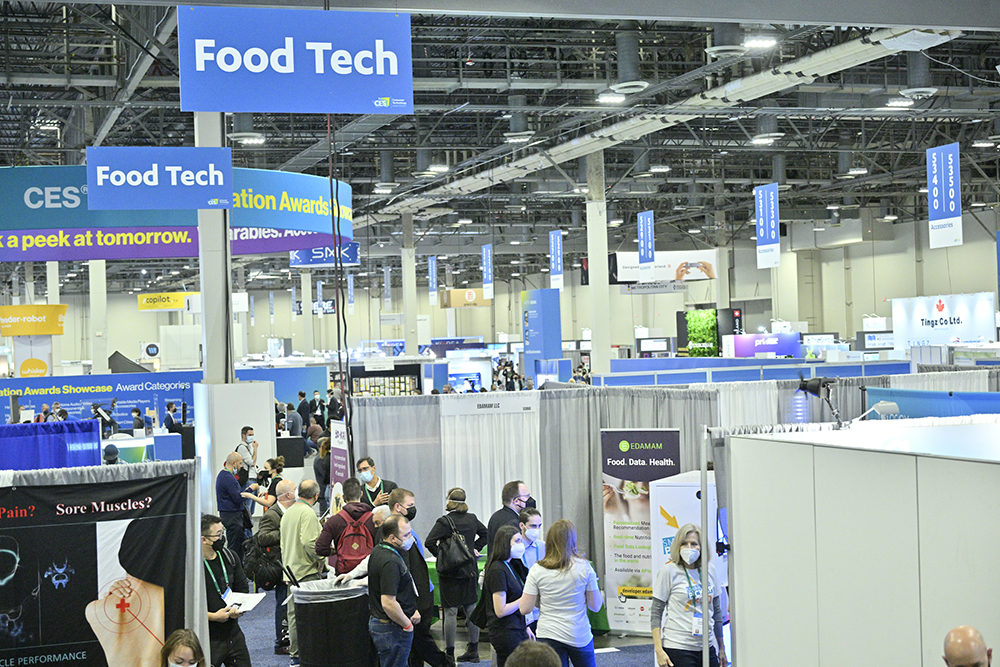
Dining-in has changed drastically in the past two years, thanks in no small part to the pandemic. It’s not just that people are making the bulk of their meals at home, but they also are cooking in different ways that take their specific diets, tastes, budgets, and desires into account. The role of consumer technology in making this an easier process is significant.
Earlier this year, CES featured an entire section and content program around food tech, which ran the gamut from countertop appliances and all-in-one cooking devices, to restaurant robots, to plant-based fast food. Some of this will be coming to market this year, but other innovations are further off on the horizon. In a talk moderated by The Spoon’s Michael Wolf, panelists Robin List of Suvie, Khalid Aboujassoum of Else Labs, Dr. Dochui Choi of Samsung, and Kai Schaeffner of Thermomix discussed what’s coming next for food technology.
Why is it So Hard for Kitchen Technology to Catch On?
The microwave was arguably the most revolutionary piece of kitchen technology in modern times. The steam oven is, of course, popular, and air fryers are really catching on, but nothing has completely altered the way we cook in recent years as the microwave did in the past.
According to the panelists, cooking – and eating – can be a painfully personal thing, and that’s why it’s difficult for just one appliance or technology to become revolutionary in a mainstream way. Some people hate cooking, and want the minimal amount of work for maximum results, while on the other side of the spectrum, some cling to history and tradition and are hesitant to adopt new cooking techniques. Some enjoy cooking and don’t necessarily want a faster method, but a more efficient one with better results is always welcome. However, it’s the personalization that consumers are looking for today.
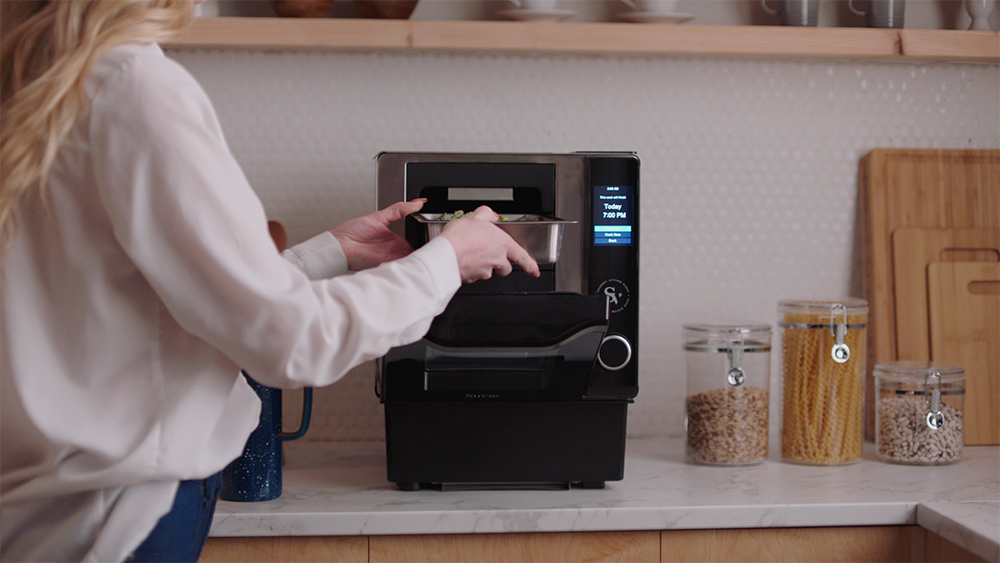
Creating More Healthful Meals
Today we have the knowledge and data to help people live healthier, longer lives with a diet especially catered just to them. Food technology companies can use feedback from their consumers to know what people are eating and what tastes they prefer. According to List, though, what we lack is a means to bring it all together quickly.
“We need to combine the technology to enable people to have healthier, tastier meals,” List said, citing how Americans tend to lack fish in their diet but might eat more of it if they knew how to cook it better.
Prospective appliances filling this gap include Suvie, which refrigerates ingredients until cooking time and will automatically cook the inserted food when the preset time is reached. There is also the Thermomix, which guides users through recipes with its one-pot mixer and scale, where it can chop, sauté, caramelize, and more.
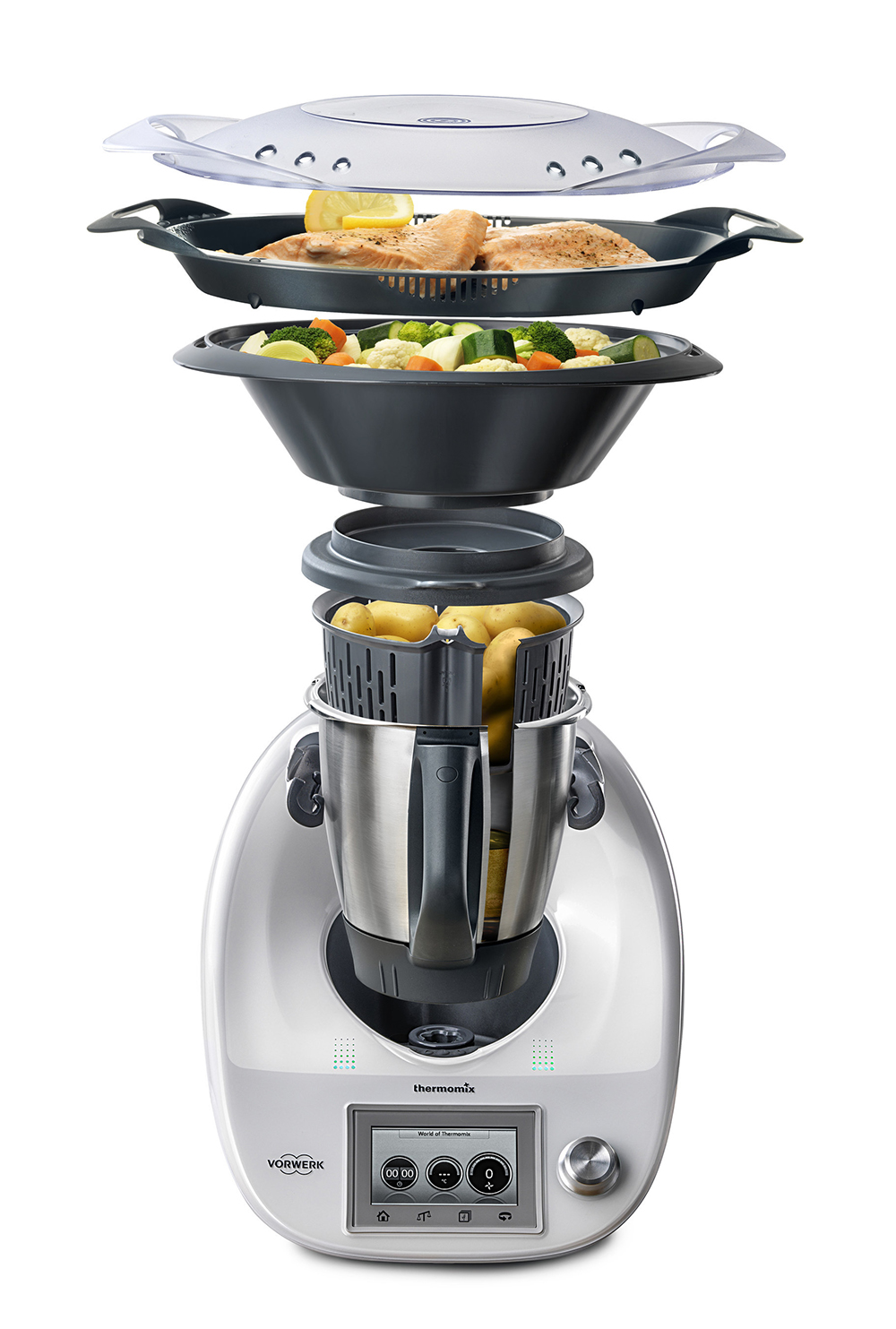
The Look of Tomorrow’s Kitchen
The kitchen has generally stayed about the same in terms of functionality throughout the years. The biggest change has been in the last 30 years, and especially recently, when it evolved to become the heart of the home and the center of gatherings. However, will it retain this identity in the future?
Dr. Choi argued that it’s possible the kitchen might not need to exist at all in 10 years. After all, there are places like Hong Kong, where the steep rents mean smaller apartments that often completely lack kitchens. Instead, many people living there order in all of their meals.
“Growing up in Korea, I lived 20 years without electricity,” said Dr. Choi. “We ate healthy foods without refrigeration for that long because of the innovative, thoughtful ways we preserved food. I see a future where refrigeration is unnecessary.”
What is definite is that consumers will always want a space, if they want one at all, that caters to their specific level of cooking. Personalization is king in the future of kitchen technology.
SOCIAL MEDIA: PINTEREST
Pinterest Tips for CE Retailers
Use these strategies on the visual social media site
and search engine to generate brand awareness
and even e-commerce sales.
By BRENDA THELUSCA
Pinterest is a great social media source for discovering new technology from multiple businesses, as well as a great place to promote your own business and even get customers for e-commerce. The social media platform and visual search engine had 478 million active users at the end of 2021 – not quite TikTok’s one-billion-and-counting users, but still quite a big number. The beauty of Pinterest is that users can pin whatever post interests them and can refer back to their pins whenever they need them. Businesses such as CE manufacturers and retailers can benefit from having their products on Pinterest because it can generate brand awareness and also generate sales. For example, Samsung US has a Pinterest page that highlights its products’ features and explains why its products are good for consumers. If you are thinking about promoting your business or products through Pinterest, here are a few tips.

Pictures are Number One.
Pinterest is similar to Instagram because pictures are the main selling point, and your product photography needs to stand out by looking different from others. If you’re selling something like a headset, use a picture other than a person just wearing it. You can show the other accessories the device comes with, or even show off any fun colors the headset model has. You could also incorporate some elements in the picture based off of the audience you are trying to reach. For example, if your headset is for gamers, use a picture where the headset is in front of a computer with a game on screen, or have the subject wearing a headset while playing on a gaming console. Show viewers a reason why they should consider your product instead of the others they’ve seen.

Use Rich Pins.
Posts that advertise a product from a website on Pinterest are called Rich Pins, and they can lead users to websites (like yours) where they can buy the product. Rich Pins automatically sync information from your website to your Pins. This is helpful for when prices or products on your website are updated because the Pin will automatically update based on the information from the website. There are three different types of Rich Pins: Product Rich Pins, Recipe Rich Pins, and Article Rich Pins. Users have to apply for a Rich Pin before adding it to their post on Pinterest, but this service is free, and applications are processed within 24 hours. Product Pins display the product price on the top left corner of the post and lead people on Pinterest to your website where they can purchase your company’s products.

Do your research with Pinterest Predictions.
Pinterest has a helpful feature called Pinterest Predicts. This service predicts popular trends based on the searches Pinterest users have done. Companies can filter predictions by audience or category, and anyone can download the report for free. This gives companies insight into what people have been searching for on Pinterest, and what products could excel on the website. For example, some of Pinterest Predictions’upcoming trends for 2022 are watches and clocks. Pinterest also offers advice on how brands can market their products on its platform. For tech companies or retailers that sell watches, Pinterest recommends the following: “Use trends-based video ads to call out upgraded technology features and cool new watch styles. But if your product offers an analog watch face feature, market this, too — some people just want to tell time the old‑fashioned way.”
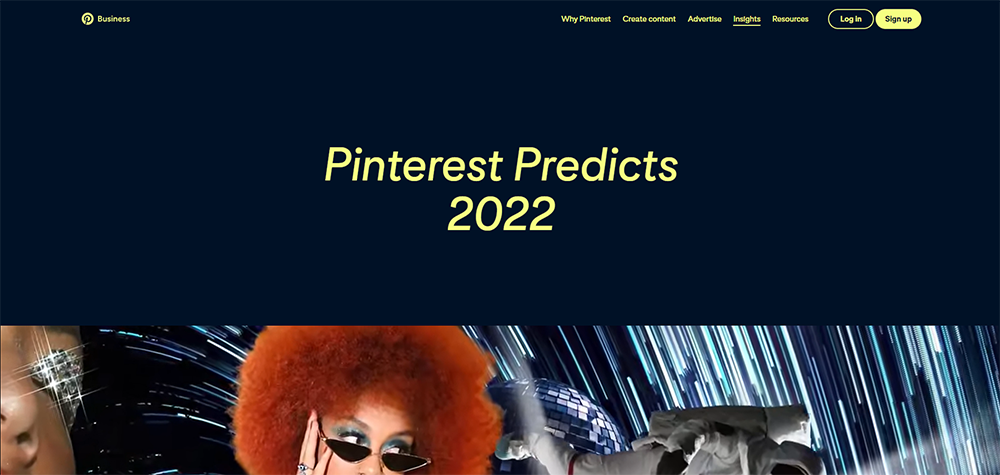
Show why a consumer needs your product.
What is the selling point of your product? Your product was made to satisfy the needs of the consumer, but what, exactly, are those needs? Sometimes people don’t know that they need certain products because they haven’t used them in their everyday life. On Pinterest, you can post a visual that explains to users how your product will be beneficial. Add a picture that has text that highlights your product’s best feature or what makes it different from your competitors. For example, Samsung made created a Pin about its Bespoke Refrigerators and how they are great for people who want to create their dream kitchen, because the refrigerators’ colors can be customized. This kind of easily visualized feature could sway someone who is remodeling their kitchen and just happens to go onto Pinterest to look for inspiration. Now they have found a fridge that could match the color scheme they want.
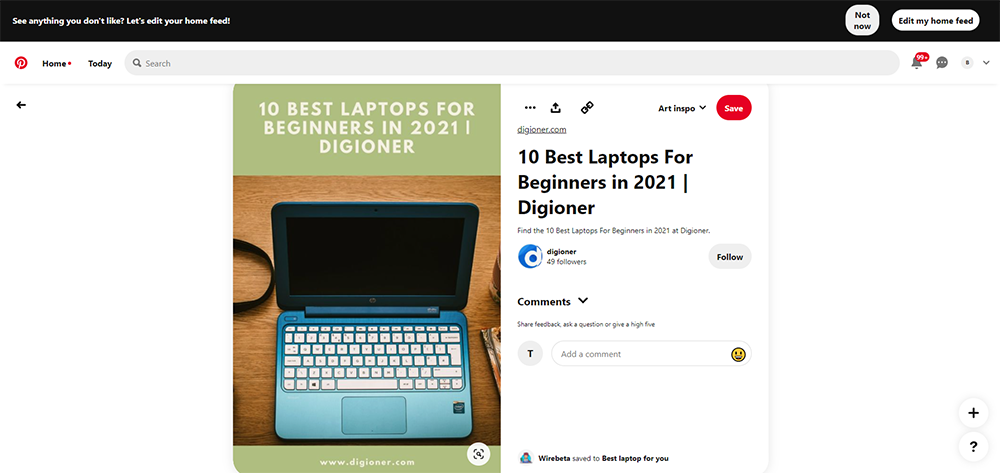
Make sure pictures are clear.
Earlier, I mentioned how having interesting pictures can grab users’ attention, but make sure they can easily tell what product is being sold. Have your product be in the center of the photo or take up most of the space in the photo. For instance, if you’re selling a microphone and you have two big speakers in the photo and the mic is barely seen, it might come off as misleading on a platform like Pinterest. Your product is the star of the show, but don’t let other objects that might seem enticing overshadow it.
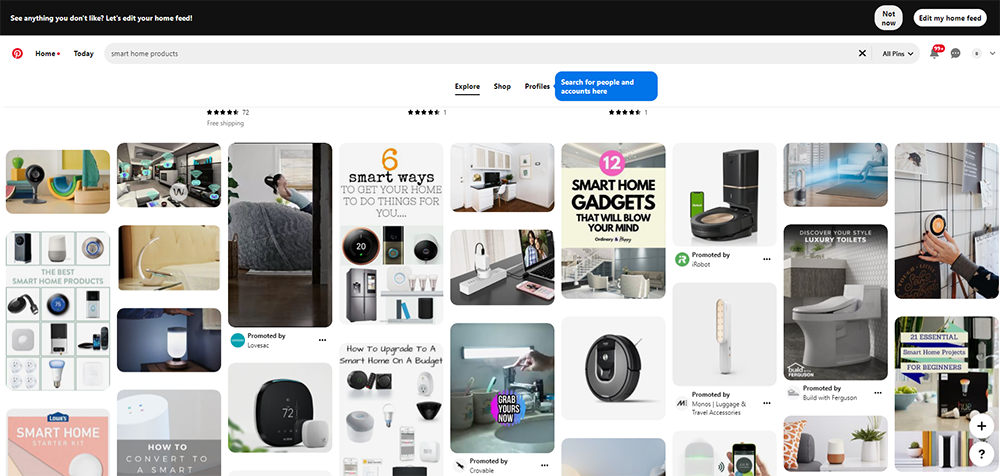
Target your hashtags.
As on Instagram and Twitter, hashtags on Pinterest are important, too, and let users that search a tag be directed to relevant products on the platform. Specific tags are helpful, but general tags work as well. For example, if you are selling a speaker with Alexa built-in, then basic tags like Alexa, Bluetooth speaker, best speakers, audiophile, or smart home are a perfectly good way to increase the chances of your product being discovered. Audiophile is a powerful tag, too, because it will be directed at users who are fans of audio. What if you don’t know what hashtags to use? There are a few options that you can use to find popular hashtags. First, you can go to Pinterest Trends and search keywords that relate to your product. The website will give statistics on how many times each tag was searched each month, as well as a list of similar trends, and popular pins that use the hashtag. Then you can put the hashtags in the description to increase your product’s chance of being discovered.

Following these simple tips can drive up awareness and interest in your products when you decide to use Pinterest. Finding new ways and places to promote your product is essential to business growth. If you have any difficulty trying to promote your products on Pinterest, then try going to the platform’s business page, which serves as a helpful resource on how to improve your experience using the website. You’ll find multiple sections that can help you see analytics, create ads for targeted audiences. and more.
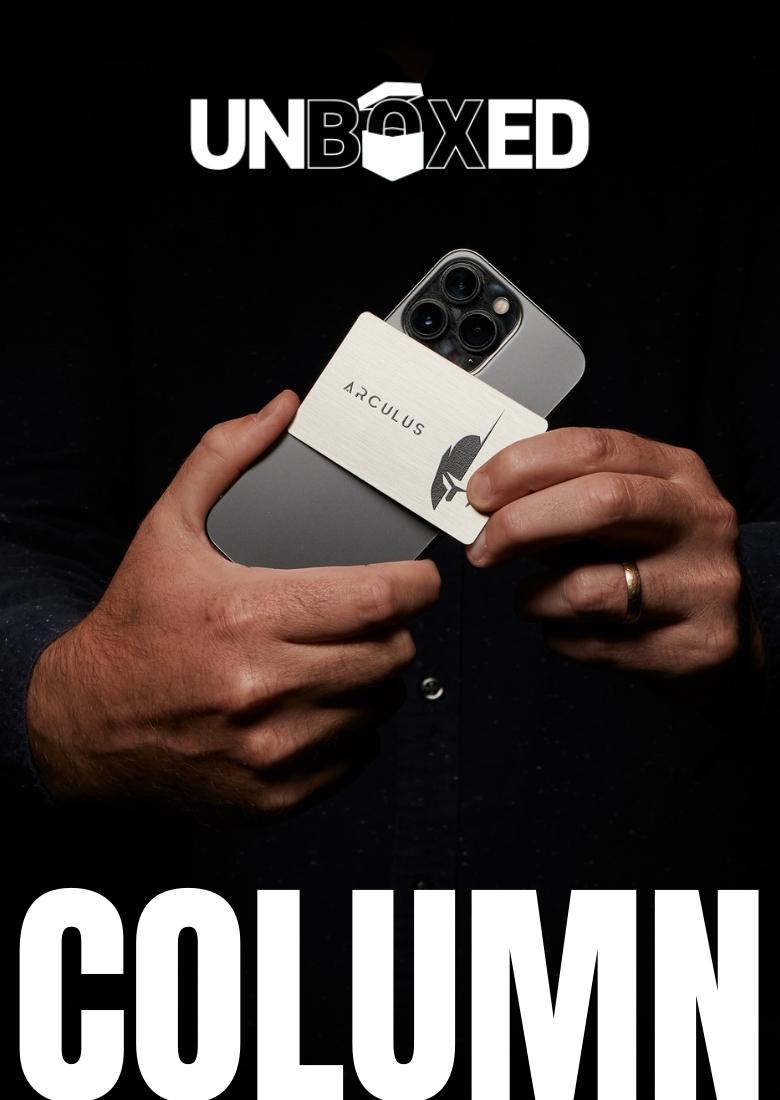
UNBOXED
Arculus Wallet
A Crypto Wallet That’ll Fit into Your Wallet
Though it looks like a credit card, the Arculus is really an ultra-secure cold storage hardware wallet for all your Bitcoin, Ethereum, and other blockchain-based currencies.
BY SAM HITT
I don’t care who you are or how much you think you know about technology or the Internet. The world of cryptocurrency, a digital currency secured by a unique piece of code on the blockchain that cannot be compromised, is daunting to enter. But it’s also a rush akin to going to a casino and sitting down at a blackjack table. However, instead of dealing with physical chips, you are dealing with an online currency that can be vulnerable to hacks when connected to the Internet. Enter Arculus, an offline bank vault for your cryptocurrencies, that just happens to look and behave like a metal credit card.
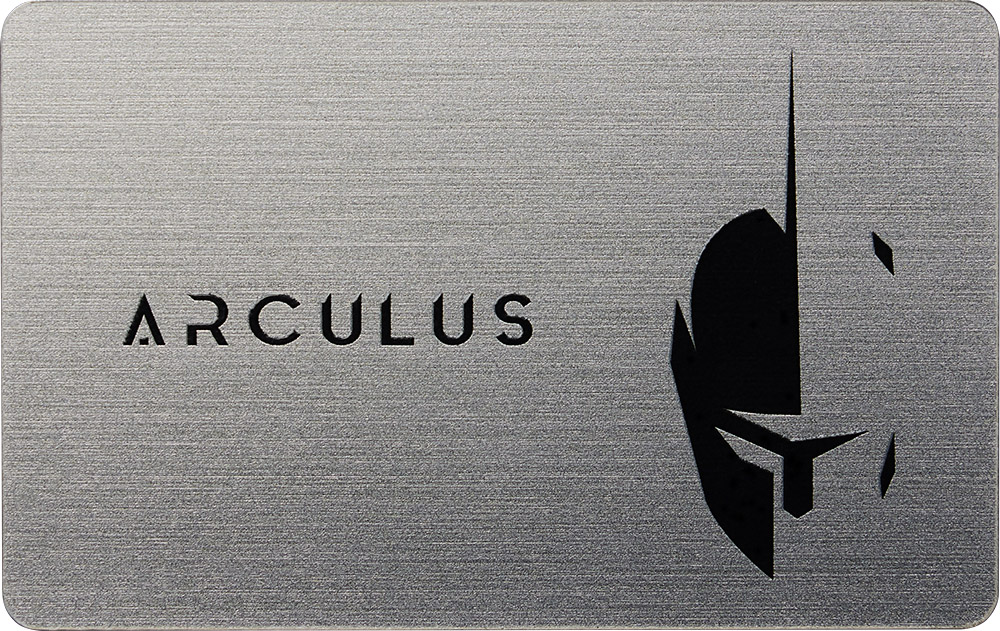
Unboxing
The unboxing of the Arculus card was truly an exciting experience. I’m not sure if I was more enthralled by the sleek metal card and pull-out packaging, which only reveals the product at the very end, or by the idea of finally getting to dive into the world of crypto. Getting the card set up is pretty straightforward. Simply download the Arculus app and tap the chip-enabled side of the card to the back of your smartphone. After that, you will be required to set up a password for your wallet and write down a secret 12-word phrase as a recovery mechanism for your account, which is pretty standard procedure across all crypto wallets.
Tap-to-Transact
After you have fully set up the account, you can buy, sell, and transfer cryptocurrencies at your leisure. Simply enter the address or scan the QR code of the account you want to send crypto to, or vice versa, to receive. Arculus gives you the capacity to carry roughly 80 percent of the crypto marketplace, including all major currencies such as Bitcoin, Bitcoin Cash, Ethereum, and XRP. In total, the Arculus wallet is compatible with 25 different cryptocurrencies. There is also a window to buy Ethereum and Bitcoin through the app, but the transaction process operates via Simplex, which is a third-party fintech platform. Once purchased on Simplex, the currency transfers immediately to your Arculus wallet. Arculus doesn’t charge any fees in this case, but Simplex charges a one-time $10 fee for converting any amount under $200. If you already have crypto on a different wallet such as Coinbase or Metamask, you can simply transfer it into your Arculus account, but that will also include a cross-platform fee for each transaction, which is a percentage fee paid to the “crypto miners” who process the transaction. When I transferred crypto from Arculus to Metamask, the fee ate roughly five percent of my transaction. It is important to note that no fees are charged on Arculus’ end, and that these fees go to miners, which are the pieces of hardware that confirm and secure the transfer of crypto.
How It Works
The Arculus card utilizes a secure NFC chip, which is the same technology used in Apple Pay, Google Pay, or any other tap-to-pay card. The logic behind this, according to Arculus Creator and Chief Innovative Officer Adam Lowe, is that “we’ve educated the American market to tap to transact in the global market. The credit card issuers and networks have done a great job doing that… So this is literally tap-to-transact for crypto. You just tap your card to your phone and sign it.”
Lowe and Arculus come from a high pedigree in the tap-to-transact world. Arculus’ parent company, CampoSecure, where Lowe has been working for the past eight years, specializes in making top-of-the-line metal credit and debit cards for companies such as Visa, Mastercard, and J.P. Morgan.
Security… Security… Security
The unique selling point about Arculus is that it combines the simplicity of a tap-to-transact card with the security of a cold storage wallet. To give a simple explanation, a cold storage wallet is a physical device that allows users to store their crypto completely offline. Other cold storage wallets exist on the market, but most are more cumbersome to use, and feature cables, small interface screens, and physical buttons. The benefit of a cold storage wallet is that it’s offline, which makes it safe from hacks by online parties. Cloud-based hot wallets, on the other hand, which are the other popular mechanism for storing crypto, are always connected to the Internet. Examples of hot wallets include Metamask, Electrum, and Coinbase Wallet. Although these platforms feature safeguards against intruders, they’re still online, and anything in the cloud is always theoretically vulnerable to security breaches that are ultimately beyond the control of users. With a cold storage wallet, the only risk is if a user gets phished or hustled out of login information.
So now, you may be wondering what happens when you connect your Arculus card to your phone; does that make it any safer than storing crypto on the Internet? Here is where Arculus’s three-factor authentication system comes in. As I previously mentioned, the Arculus card is a cold storage wallet, so all of your crypto is stored on the card itself, not on your phone or in the cloud. For you to view the crypto, you have to interface the card with your phone via the tap function.
However, before you complete that final step, you have to first unlock your phone and then log into the Arculus app using your unique six-digit passcode. Therefore, for someone to get access to your account, you would have to physically let them in by unlocking your phone, tapping your physical card, and entering your passcode. Unlike anything in the cloud, the three-factor authentication method means there is no way to remotely hack the card since the card and the phone, along with a password, need to be present at the same time to get access. And the phone app really acts only as a remote interface to the card; the data always stays on the card. When you close the app, your card with all the crypto information on it disconnects from your phone and cannot be accessed by the device.
“Just like you trust your home to a physical key with your padlock, you should trust your digital life to digital keys, not usernames and passwords, not SMS messages that can get fetched, but digital keys for your digital locks for your digital life,” says Lowe.
As a further measure for user security, Arculus doesn’t store any personal data on the user on its own servers. This means that your Arculus account cannot be tracked back to you in any way. Even so, if you were to lose or somehow destroy the rugged metal card, don’t worry. You can recover your assets by connecting a new card to your phone and entering your secret 12-word recovery phrase.
Not Quite a Crypto Credit Card.
Now to the fun stuff. Naturally, I had to find a way to test out how Arculus worked in the real world. Theoretically, at some point down the line, we all may be able to use crypto in our everyday lives to, say, buy a coffee, and while that’s possible in a few niche locations, we aren’t quite there yet in most of the world. There are a few major retailers that accept Bitcoin in exchange for real-world products, one being Overstock. Using Arculus to purchase an item on Overstock is extremely easy; you just need to enter the crypto address provided by Overstock into the Arculus app and transfer your crypto. There are still mining fees attached to the transaction, which account for roughly five percent of the transaction, but it is nothing more aggressive than a shipping fee.
Next, I turned to non-fungible tokens (NFTs), where I found that it wasn’t so easy to use Arculus. NFTs are unique pieces of data stored on a blockchain that can take the form of an image, video, or audio file. At the moment, it seems that users aren’t able to store NFTs in their wallet. Some other cold storage wallets such as Trezor support this capability with the help of third-party platforms such as Metamask. Moreover, because Arculus is an offline storage device, it is inconvenient to use for online marketplaces such as OpenSea, where you aren’t sending crypto to a specified address. On those types of platforms, it is much easier to use hot storage wallets like Metamask, which are an add-on extension to your browser. Metamask essentially functions like PayPal for your crypto, where you can connect your wallet to a site and easily complete transactions. If you are looking to use crypto stored in Arculus to make purchases on a platform such as OpenSea, you have to first transfer your crypto to a hot storage wallet like Metamask and pay the associated miner’s fee. Even though Arculus may trace its roots and technology back to credit and debit cards, it does not function as one. As the cold storage wallet category name implies, Arculus is best used as a simple and secure storage device for your crypto.
The Bottom Line
At the end of the day, I think the Arculus wallet is a great way to easily store crypto for those who have a lot of crypto. The seamless blending of tap-to-purchase technology is also a major draw over competitors. However, newcomers to the crypto space are probably better off starting with more mainstream hot wallets such as Metamask or Coinbase, due to the purchasing flexibility they provide. Once users build up the holdings needed to justify a cold storage device, then Arculus is a super-secure, streamlined, and portable option. I think Arculus would do well to partner with an existing hot wallet or develop its own, so that users can transfer funds while avoiding major fees. However, until then, Arculus is best to be treated as an interest-free crypto savings account.
According to research conducted by Mordor Intelligence, the global cold-storage wallet market was worth $202.4 million in 2020 and is projected to reach 877.69 million by 2026. Retailers interested in catering to the growing interest in cryptocurrencies should look into carrying this emerging market segment.
Arculus has advised that interested retailers should reach out directly to Arculus via its website or on LinkedIn. Arculus is currently available at a retail price of $99.
Summary:
Arculus Wallet
Price: $99
Wallet Type: Cold Storage
(Works with Arculus Wallet app for Android and iOS.)
Available: Now (U.S. only) from getarculus.com.

CONNECTED PRODUCTS
Online and Upward
How consumers learned to stop worrying and love connected products.
By JEFF UNTERREINER, President, U.S. Connected Living at Assurant
To paraphrase the movie “Dr. Strangelove,” 2021 was the year people around the world learned to stop worrying and love their connected electronics. For the first time in five years of researching connected consumer behaviors, Assurant’s Connected Decade study shows a majority of consumers across every generation have a positive view of connected technology.
This is true not only in the U.S., but in other major countries across the globe as well. Consumers in Canada, the U.K., Japan, Germany, Brazil, and Australia share similar sentiments.
Unsurprisingly, Millennials and Gen Z lead the way in their affinity for technology. What’s interesting is that the lion’s share of baby boomers and the silent generation – who have been more pessimistic in the past – now agree that connected consumer technologies have made life better rather than worse.
Not only do all generations believe technology is beneficial, but there was also a sizable jump in attitudes in 2021 after remaining relatively steady for the previous four years.
On a 10-point scale, with 10 equaling “made life better” and 0 being “made life worse,” the perceived impact of technology increased to 8.6 in 2021 from an average of 6.5 in 2019 among Gen Z, Millennials, and Gen Xers in the U.S. (Fig. 1) Baby boomers and the silent generation also saw the largest rise since 2016.
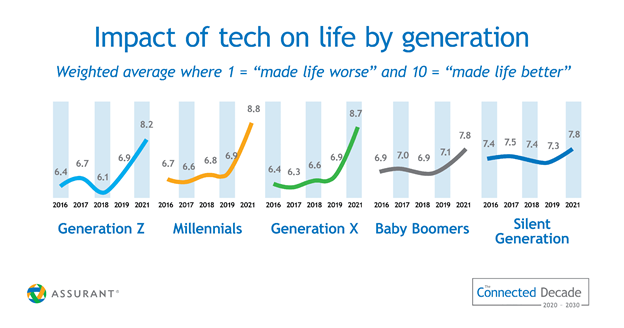
One reason for this jump is likely the fact that people became more reliant on consumer electronics with the shift to work-from-home and travel restrictions due to the COVID-19 pandemic. Many people experienced challenges transitioning to working and schooling from home for the first time, especially families having to do both.
Others faced worries from socially isolating, especially baby boomers and the silent generation. Connected products enabled them to keep in touch with children, grandchildren, and friends, while new telehealth applications provided a safe, convenient way to make doctor visits from home.
As people began to rely on remote services, they became more willing to purchase consumer electronics to support those services. Not only did they purchase equipment for themselves, but nearly a quarter (23 percent) also bought a smart product for someone in their family.
This change in attitudes and purchase behavior has opened up new market segments that were lagging in adoption pre-pandemic, and provided an impetus for consumers to expand into new connected product categories they hadn’t considered previously.
For example, the need to be connected has helped turn former technophobes into buyers. Once fearful of new technologies, this group has experienced the benefits and convenience of grocery and food delivery, seeing their doctor from their own living room, and having more personal and meaningful interactions with their family over long distances.
That’s not to say this group doesn’t continue to have concerns about technology. Assurant’s survey shows they still fret over connecting smart products to Wi-Fi, understanding how to replace a broken product, and data security. Offering consumers access to an integrated platform that delivers onboarding help, tech support and identity protection can help drive adoption and loyalty.
Younger generations are looking for choice and flexibility of service and support. As people continue to connect remotely, everything from self-service digital solutions to advanced diagnostic product support can spell the difference in attracting initial and repeat business from consumers across age groups.
Giving consumers the confidence to purchase is important, as once they buy a connected product, they tend to remain loyal and buy again. In 2021, nearly 40 percent of U.S. consumers said they very likely will buy a newer model of their connected devices when the next version is released, a 26 percent increase from 2019. An additional 32 percent said they are somewhat likely to buy a newer model.
While Millennials and Gen Xers are the most likely to repurchase, don’t count out the older groups. Half of baby boomers and more than 40 percent of the silent generation said they are somewhat or very likely to buy a newer model.
It comes down to providing the comfort level to make the purchase. Given the complexity of installing, connecting, using, and troubleshooting many connected products, retailers should look to leverage digital platforms that enable consumers to access service and support wherever and whenever they need it. Doing so can pay dividends with each new product model introduction.
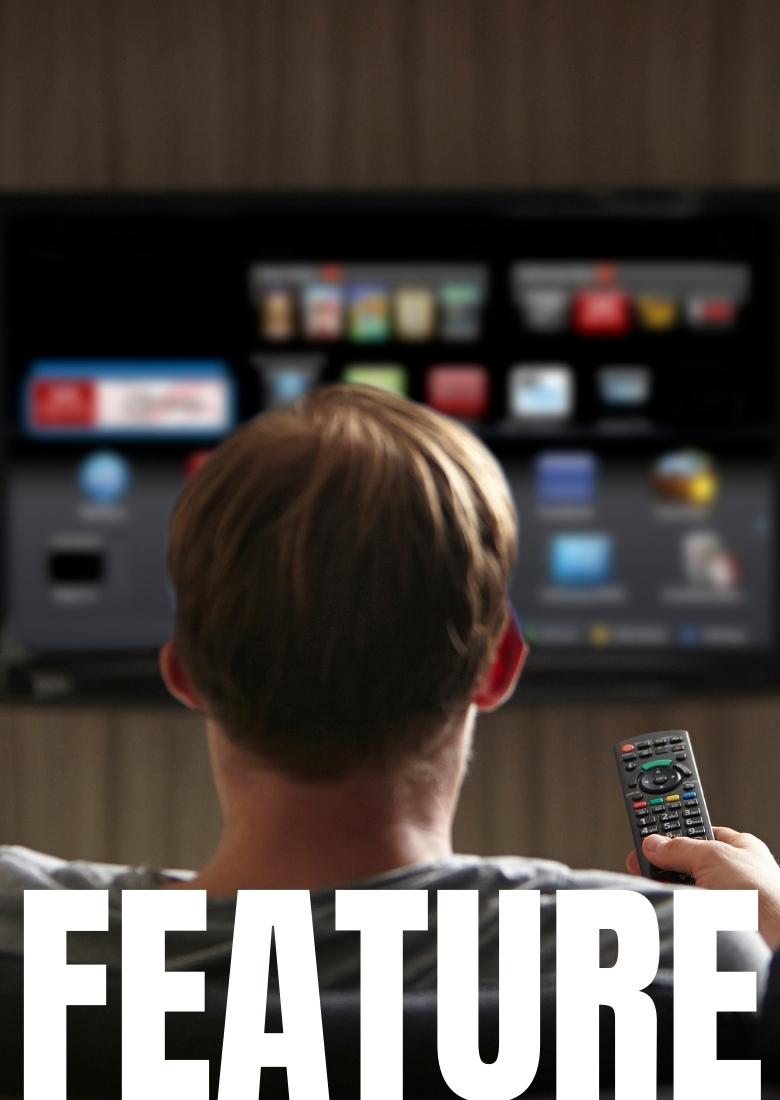
ENTERTAINMENT TECH
What Does 2022 Look Like for the Entertainment Tech Market?
Besides fewer streaming services, smart TVs will increasingly become the central point of any connected home.
By ERIC SORENSEN, Senior Contributing Analyst, Parks Associates
More changes are coming for the video entertainment market in 2022. Nearly 50 percent of U.S. broadband households have four or more OTT video service subscriptions, and 82 percent have one OTT service. The worldwide pandemic has cemented customers’ migration to online and away from traditional cable television. Video viewers believe that streaming services are less expensive, more convenient, and more aligned with the way they wish to consume video programs than traditional television broadcasts.
Over the past two years, rapid transformation and continually shifting customer preferences have forced service and device suppliers to be prepared to adapt on an almost daily basis. Service providers, both conventional and online, will need to change their respective strategies and services in order to keep up with this constantly evolving customer base and supply attractive video content when, where, and how customers want to view it.

Consolidation will rule video services in 2022.
The several-year trend of video cord-cutting in favor of online video services continues, as Parks Associates research reveals that 25 percent of Internet households expressed an intention to terminate their cable or satellite subscriptions and move to an online TV provider. This has resulted in an incredibly fragmented video services market with hundreds of online streaming services available in the U.S. alone. Streaming media companies profit from having greater scale, and one strategy used by traditional media companies to compete in the streaming environment is to acquire current services.
Consolidation in the entertainment and television sectors will be fueled by the desire of media conglomerates to diversify their revenue streams beyond traditional pay television. Major M&A and service consolidations in 2021 included NBCUniversal’s merger of the WWE Network with Peacock, Funimation’s acquisition of anime competitor Crunchyroll, and Blackstone’s $3 billion acquisition of Moonbug Entertainment. Additionally, the recent acquisition of Activision-Blizzard for $70 billion by Microsoft is part of the company’s strategy to remove rivals and improve its position in the gaming frontier. This year, the SVOD industry will likely consolidate further, resulting in a wave of high-profile mergers, partnerships, and acquisitions.
Smart TVs have become the most important point of entertainment aggregation, control, and data collection in the home – shifting power to the platform owners.
The firm’s research shows that 56 percent of U.S. broadband households own a smart TV, the most popular connected entertainment device in the home, ahead of streaming media players and gaming consoles. Smart TVs are a single point where both linear and OTT content are consumed from a variety of sources. It is evident that they have become a home entertainment centerpiece that controls content aggregation as well as collects valuable user consumption data across all available forms of video delivery.
Though there are many brands, only a handful of smart TV platforms control today’s market. The considerable effort and expense of creating and maintaining a smart TV platform means all but the three leading TV manufacturers turn third-party platforms to power their smart TVs. Additionally, some of these leading manufacturers have begun licensing their formerly proprietary platforms to third parties.
Today, six platforms power nearly all of the smart TVs sold in the U.S.: Amazon Fire TV Edition, Google Android TV / Google TV, LG WebOS, Samsung Tizen, and Vizio SmartCast. As a result, these six platforms, rather than the many retail TV brands themselves, will wield the most influence over the U.S. smart TV market in 2022.
Smart home interoperability is on the verge of a major leap forward, if Matter delivers.
Fragmentation plagues the smart home due to an incredibly diverse ecosystem of products, plus due to numerous competing communication protocols, seamless device-to-device interaction is difficult to achieve. For instance, 44 percent of smart home device owners who have had technical problems with a smart home device report having difficulty getting the device to interact with other devices in their home.
Major industry players, including Apple, Amazon, Google, Comcast, NXP, and others joined with the Connectivity Standards Alliance in developing and supporting Matter, an open-source, single IP-based standard designed to increase interoperability and compatibility among IoT devices in the home. The first Matter-compatible products are due to roll out in 2022.
In conclusion, the industry’s proven resiliency and flexibility lay the groundwork for the changes we may expect this year.
Visit www.parksassociates.com or join the firm’s upcoming Future of Video Conference sessions for more information on the latest insights on new trends in the video and connected entertainment industries, with insights on consumer behaviors and preferences and the challenges for the video industry in meeting these expectations.
That’s not to say this group doesn’t continue to have concerns about technology. Assurant’s survey shows they still fret over connecting smart products to Wi-Fi, understanding how to replace a broken product, and data security. Offering consumers access to an integrated platform that delivers onboarding help, tech support and identity protection can help drive adoption and loyalty.
Younger generations are looking for choice and flexibility of service and support. As people continue to connect remotely, everything from self-service digital solutions to advanced diagnostic product support can spell the difference in attracting initial and repeat business from consumers across age groups.
Giving consumers the confidence to purchase is important, as once they buy a connected product, they tend to remain loyal and buy again. In 2021, nearly 40 percent of U.S. consumers said they very likely will buy a newer model of their connected devices when the next version is released, a 26 percent increase from 2019. An additional 32 percent said they are somewhat likely to buy a newer model.
While Millennials and Gen Xers are the most likely to repurchase, don’t count out the older groups. Half of baby boomers and more than 40 percent of the silent generation said they are somewhat or very likely to buy a newer model.
It comes down to providing the comfort level to make the purchase. Given the complexity of installing, connecting, using, and troubleshooting many connected products, retailers should look to leverage digital platforms that enable consumers to access service and support wherever and whenever they need it. Doing so can pay dividends with each new product model introduction.

ELECTRIC VEHICLES
BEVs to Go Big in 2022
Eco-friendly battery electric vehicles, also known simply as EVs, are dropping in price and expanding in form and function, including delivery.
By JOHN R. QUAIN
Just a couple of years ago, the parking lots around the Las Vegas Convention Center were filled with autonomous car demonstrations, but this year it was the year of battery electric vehicles (BEVs), also known as simply EVs — with implications not just for consumers but for retailers as well in the years to come. From scintillating prototypes to delivery robots to infrastructure plays, CES showed just how electrification is going to change the retail landscape.
Certainly, CES had its share of expected electric car and pickup truck introductions. GM’s CEO, Mary Barra, took the (virtual) opportunity to reveal the company’s forthcoming electric Chevrolet Silverado. GM already has electric versions of the Hummer coming off the line, and startup Rivian’s well-reviewed R1T EV pickups are already rolling down highways. Ford is expected to get its F-150 Lightning EV to market this spring.
Meanwhile, BMW debuted its performance-oriented iX M60 SUV at the show, Chrysler bowed the Airflow, Vietnamese automaker VinFast promised an electric SUV for its U.S. market debut this year, and even Sony got into the EV act, with Sony’s chairman, Kenichiro Yoshida, touting a new prototype of its Vision S concept electric vehicle (again) and the formation of Sony Mobility, which will launch Sony EVs.
But more important, commercial EVs are having a moment, with major automakers and startups hoping businesses will see EVs as a way to reduce fuel and maintenance costs, improve delivery uptime, and solve some supply-chain issues by deploying autonomous delivery vehicles. At CES, the commercial announcements ranged from warehouse drone-like package movers, to electric box trucks designed to run around the clock, to ebots intended to serve curbside pickups.
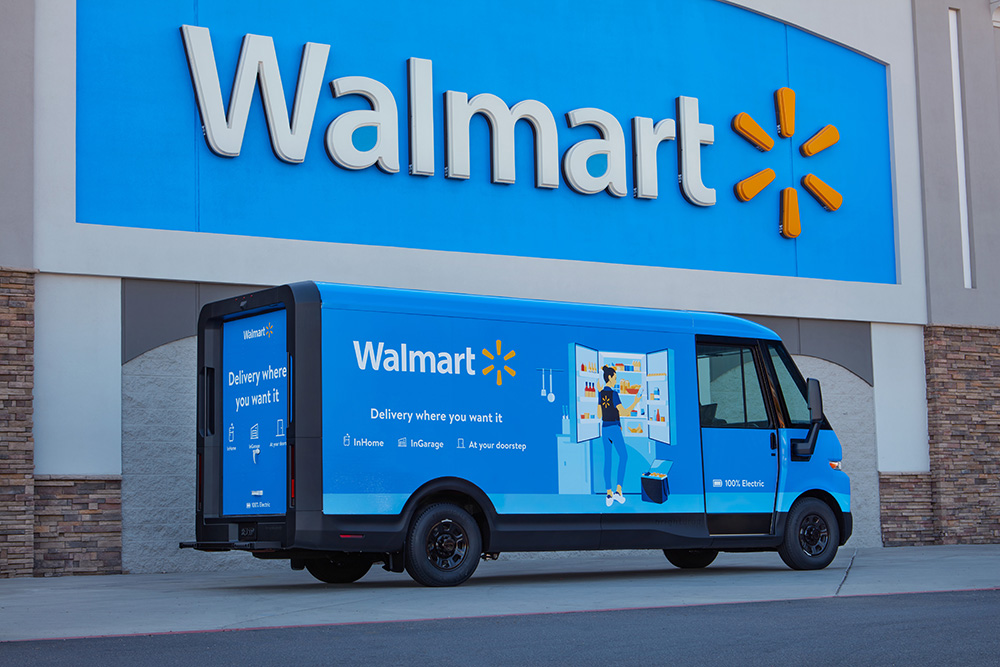
Big Boys Go BEV
GM subsidiary BrightDrop began the show announcing that Walmart had reserved 5,000 electric vehicles from the company to do last-mile deliveries to homes. The order includes BrightDrop’s EV600 box trucks and its EV410 vans. It’s all part of Walmart’s push to extend its InHome delivery service from six million to 30 million U.S. households by the end of the year.
Meanwhile, FedEx, which already completed a pilot project using BrightDrop EVs in New York City, will order 2,000 more trucks in the next couple of years and expand EV use into 10 different markets this year. According to the companies, it’s not only about reducing emissions and helping the planet. The EV program in New York City found that the EVs with their unique lower floor designs reduced the physical strain on couriers and increased package deliveries by 15 percent per hour.
Competing against FedEx and Walmart, Amazon added to the traffic jam of EV announcements. It already has a deal to use Rivian EVs, but added a new partnership with Stellantis, the company formed from the merger of Fiat, Chrysler, and Peugeot. Amazon plans to become the first customer for Stellantis’ Ram ProMaster BEVs when they become available next year. As part of the symbiotic relationship, Amazon’s cloud service AWS will provide the in-dash software for Stellantis, including fleet management programs and integration with the Alexa voice assistant.
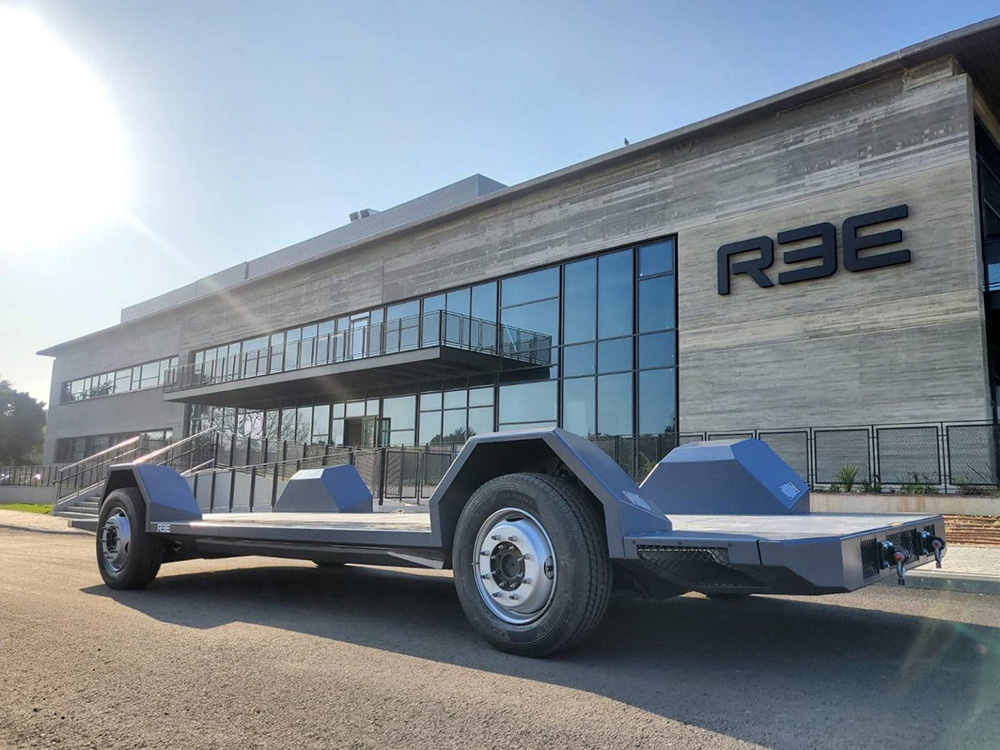
BEVs for the Rest of Us
The electrification movement isn’t limited to the big-box big boys. Several companies, such as Herzliya, Israel-based REE Automotive, are designing end-to-end systems and services for smaller retailers and delivery companies to help them make the transition.
REE Automotive wants to use its unique P7 EV platform announced at CES to build a variety of vehicles for businesses. The system uses four independent near-wheel motor, suspension, and steering systems to create an open and flat vehicle platform with increased cargo capacity. The design is flexible enough to be used in everything from small vehicles up to the size of big-box trucks.
“We have also created a complete ecosystem,” REE Automotive’s CEO, Daniel Barel, explained in an interview with Dealerscope. “Customers can start a fleet, including charging systems and financing the vehicle of their choice and data as a service from us,” he said.

With pilot programs under way in the U.S. and U.K., Barel said the company also hopes to appeal to independent mom-and-pop delivery companies that often do last-mile runs for the likes of FedEx. “How do those people go electric? We’ll put it all together and even call the electric company,” he said.
For back-end operations, Dubai-based Evocargo is focusing on in-hub indoor/outdoor cargo transportation. At CES, the company featured its Smart Evocargo EVO.1, which can handle up to 1.5 tons and run for 20 hours without interruption. Co-founder Andrey Bolshakov told Dealerscope that the company has expanded beyond its original vision of autonomous vehicles six years ago to now deliver a full service based on its smart electric vehicles.
“So we’ll do fleet management, electric management, and the infrastructure part like the charging structure,” Bolshakov said. The company plans to have several projects running in the U.S. and U.K by the fourth quarter.
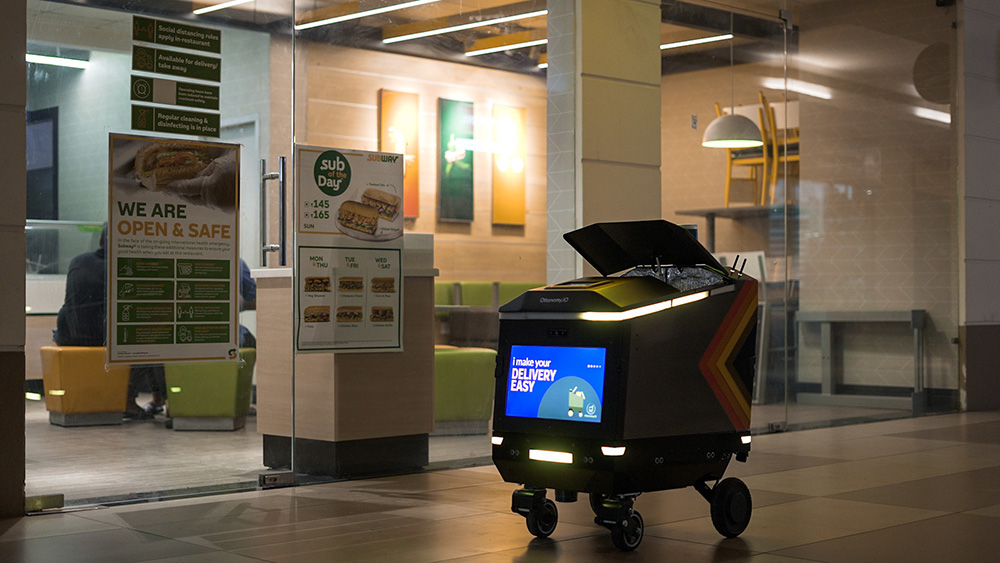
Self-Driving Still Alive
So what happened to all those autonomous vehicles promised at CES shows of the past? They’re still alive, according to the CEO of the Toyota Research Institute, Gill Pratt.
“First you’ll see low-speed urban shuttles that can come to a safe stop,” Pratt told Dealerscope, “and then we can improve the traffic congestion issue. People are used to slow-moving vehicles, so that’s going to come out very soon.”
Such test programs are already under way on college and corporate campuses. And Walmart is already experimenting with autonomous box trucks from startup Gatik running a 7-mile loop from a warehouse to a fulfillment center in Arkansas. The program covers the middle mile in the supply chain. So it could be adapted to run from any warehouse to a retailer with Gatik mapping the route and adjusting the truck’s driving behavior depending on the context (parking lot vs. city street, for example).
But it’s more than just moving palettes and people. Ottonomy wants to change the post-pandemic retail experience.
At a CES press conference, Ottonomy CEO Ritukar Vijay described how the Santa Monica, Calif.-based company wants to solve labor shortages and staffing issues with robot delivery drones. Essentially take-out food delivery R2D2s, the company’s land-locked drones can navigate indoor and outdoor spaces to take orders from the counter to the curb. Vijay said the company is already testing its autonomous Ottobots for food and retail delivery in the Cincinnati/Northern Kentucky International Airport.
“Sixty percent of orders in the U.S. right now are curbside pickup orders,” said Vijay, “and we want to redefine the drive-through experience” with autonomous robots.
Meanwhile, there’s the question of how we’re going to charge all those EVs that automakers are hoping consumers will buy this year. Several charging network companies drew a lot of attention over the past year, including Blink Charging, which made several product announcements at CES.
In addition to launching new home Level 2 chargers for consumers, Blink expanded its commercial charging stations, which can be installed in multi-unit apartment buildings and parking spots at retail outlets.
“We can be the owner/operator of the stations or partner with the retailer and split the revenues,” explained Blink President Brendan Jones in an interview with Dealerscope, “or you can buy it outright.” Typically, retailers do a site host lease so that Blink is responsible for installing, maintaining, and servicing the charging stations.
Charging stations can attract customers, of course, and keep them in the store, since it typically takes 30 to 40 minutes to charge a vehicle. At CES, Secretary of Transportation Pete Buttigieg made a virtual appearance to talk about infrastructure plans. While acknowledging that innovations in EVs and autonomous cars are coming from the private sector, government still has an important role to play, he said, especially with the passage of the latest infrastructure bill, which includes $7.5 billion to help build out charging station networks like Blink’s.
Government didn’t invent the airplane or train or car, but “government did build airports, lay tracks, and build highways,” said Buttigieg.

HEALTH & WELLNESS
Health and Wellness Trends for 2022
With the world still in the clutches of the pandemic, the worldwide market for home fitness equipment is expected to continue to grow.
By JOHN R. QUAIN
The health and fitness market is looking stronger every day, and that trend should continue through 2022, if CES was any indication. Despite the muted nature of the show, products ranging from air filters to fitness and health tracking watches and rings continued to draw attention.
With the world still in the clutches of the pandemic, the worldwide market for home fitness equipment is expected to continue its expansion. The sports equipment market in the U.S. alone is estimated to grow from $14.5 billion in 2020 to $16.8 billion by 2025, according to analysis by Statista. Meanwhile, product trends are starting to shift away from online exercise classes, according to an annual survey from the ACSM Health & Fitness Journal. The top trend this year, according to the report, will be wearable technology, followed by home gym equipment and then outdoor exercise gear (see our coverage of emobility at CES).
That all bodes well for retailers looking to ride the health and wellness wave. And even though some of the bigger brands like Peloton (which also failed to introduce a much-rumored rowing machine) bowed out of the CES earlier this year, there was still plenty of products for the gawkers who did make it to the show, in person or otherwise.
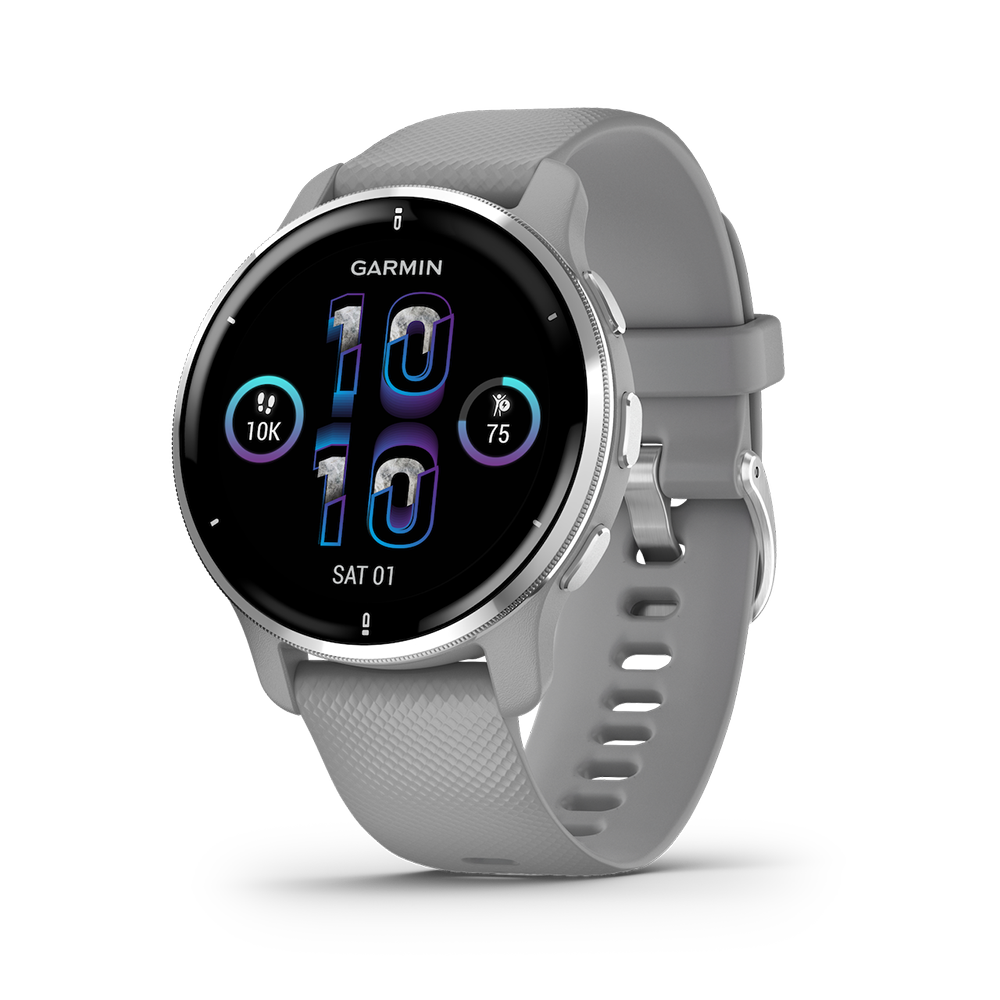
Focus on Fitness
While the Peloton rowing machine failed to debut at CES earlier this year, the Hydrow rowing machine made waves with a quiet but challenging rower for indoor workouts. The company says it will be supported by more than 3,000 live and on-demand workouts, with a monthly $38 subscription. Owners can also virtually sluice across the likes of Switzerland’s Lake Lucerne. The $2,295 rowing machine is about 7 feet long and about 4 feet high, including the monitor, but it’s an excellent low-impact exercise option for people looking for a more full-body workout.
Fitness watches continue to be a major presence in the health and wellness sector as well, and Garmin has launched a new mid-priced line, the $450 Venu 2 Plus. It’s more stylish than previous models and allows wearers to make phone calls and ask Siri and Google Assistant for help using the watch. At a lower price point, Garmin’s $180 Vívomove Sport Hybrid looks like a traditional analog watch with hands, yet it still offers features like a blood oxygen saturation monitor. The Vívomove is also platform agnostic: It works with Android phones or Apple iPhones.
In addition to established brands, there continue to be newcomers like the $599 NoWatch. While the bracelet monitors your temperature, blood oxygen levels, and pulse, it does not have a screen. The company argues that would be distracting and detract from mindfulness. So there’s an associated app to check your data.
Also in this category, there continue to be products like the Oura Ring that are trying to appeal to a generation that has no intention of wearing a watch. The Movano Ring, for example, is a fitness tracker ring that’s considerably slimmer and more comfortable than the competition. It also has the unique ability to monitor blood pressure levels, a serious health issue in the U.S. Movano plans to be FDA-approved at launch. No pricing has yet been announced, and the company hopes to have beta units available by the second quarter of this year.
In the Bathroom
While trackers can tell you how your training is going, only the Withings Body Scan will assess your “segmental body composition” (if that’s something you’d like to know). The $300 Body Scan looks like a high-tech scale: it has a glass platform with electrodes and sensors that you stand on and a handle with electrodes that you lift up. The result: a readout of your stats like fat/water analysis and sweat gland function on a small LCD screen. Withings expects the Body Scan to be available in the second half of this year.
On the more traditional side, electric toothbrushes are getting more sophisticated every year. Witness three new Oral-B IO Smart Toothbrushes that were introduced at CES last month. The budget-minded IO 4 and 5 will cost less than $100, while the Series 10 boasts a charging base with a display to show how long you brushed and at what power level. With more than double the brushing modes of the IO 4 and 5, expect the Series 10 to cost over $250.
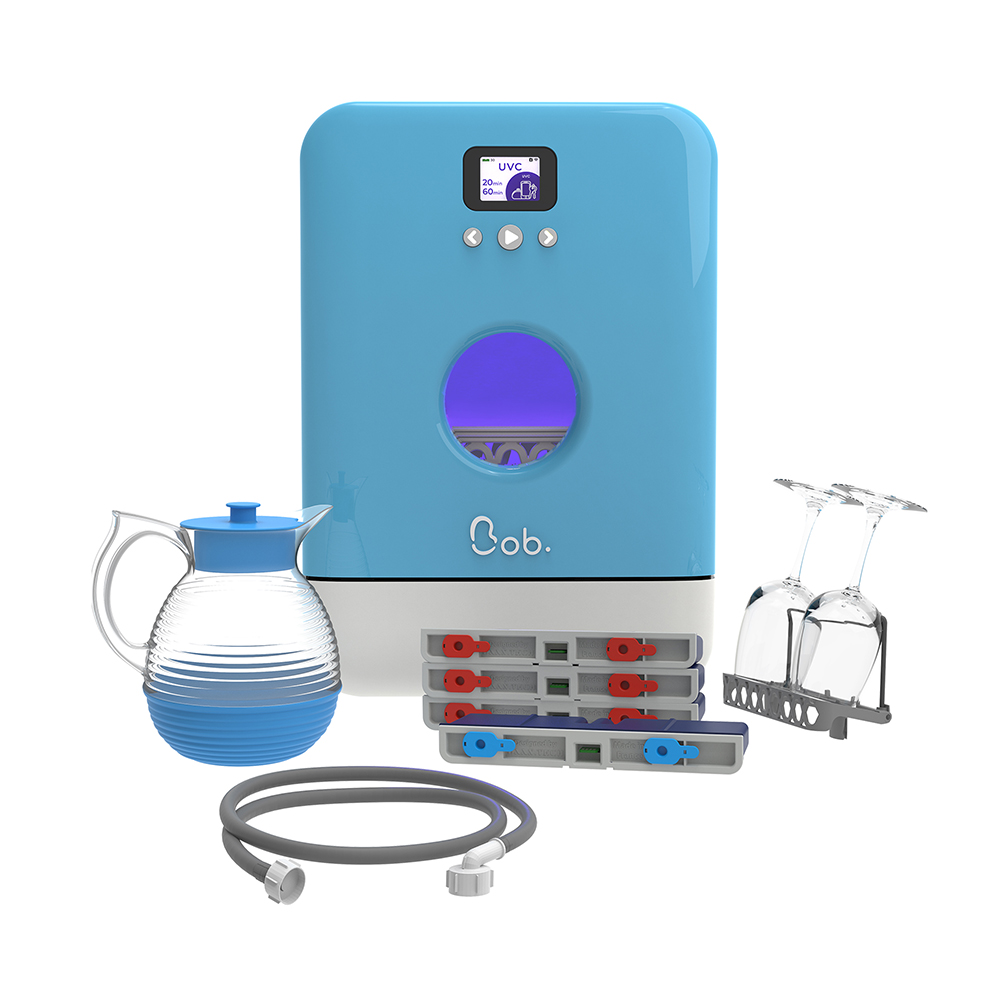
Kitchens, Too
While more people are cooking and eating in, home kitchen appliances are also getting a healthy spin this year. One example: Bob the Mini Dishwasher. A little larger than a breadbox, Bob is a Wi-Fi-connected countertop dishwasher with its own one-gallon water tank (so it doesn’t have to be connected to a faucet). For the COVID-conscious buyer, Bob also has a dry cycle that uses ultraviolet light to kill bacteria and viruses. When it launches, Bob will be $400.
Big brands are also tuned into the cook-at-home trend, including Panasonic, which last month introduced the HomeChef 7-in-1 Compact Oven, which is a microwave that can also steam food or do convection baking — or sanitize. The HomeChef can also air fry, ferment, and stew. The polymath oven will come with 18 pre-programmed meal settings to make things easier and will be available this spring for $500.
Easier Breathing
Last month, CES featured plenty of air filters on display to combat indoor pollution and viruses, with an increased focus on monitoring air quality. The $199 Airthings View Pollution device can alert homeowners to the presence of serious city particulates to smoke from wildfires (welcome to 2022) — all aimed at preventing respiratory problems. For another hundred dollars, the Airthings View Plus adds radon detection and airborne-virus monitoring.
CES also featured many more health and wellness devices that ranged from the sublime to the silly. Intel-backed Metalenz, for example, announced new miniaturized polarization lenses for smartphones that could potentially make it easier for healthcare professionals to detect conditions like skin cancer. And lighting company Sengled introduced a mesh network connected Smart Health Monitoring Lightbulb that uses radar to track the biometrics of people in a room — a possible boon to those worried about monitoring aging parents.
Lastly, there is no shortage of wacky wellness tech. The consensus at CES 2022 was that the wildest product shown in Las Vegas was the Amagami Ham Ham Finger-Nibbling Robot Toy. The stuffed cuddly toy has two dozen different nibbling patterns to make it seem more life-like (we assume). Pricing wasn’t announced, and many reporters thought Ham Ham was too gimmicky. On the other hand, some of them thought that Furbies were silly, too.

HOME SECURITY
How to Sell a Smart Lock 365 Days a Year
Locks are essential in winter, spring, summer, and fall, but closing the deal still means having an extra level of knowledge and sensitivity around specific seasonal scenarios.
By NICK ENGLISH
Everyone has their favorite season. Some love the chill of winter. Others favor the rebirth of spring. Some prefer the heat of summer or the brilliant colors of autumn. But if you’re a smart lock dealer who is looking for an edge in selling smart locks, there’s no reason to pick a favorite time of year. Every season offers homeowners reasons to purchase smart locks, just as every season offers dealers opportunities to grow their smart lock business.

Spring and summer vacations mean business.
The spring and summer seasons see the weather getting warmer, with many families heeding the call to go away for long weekends or extended vacations. This is another seasonal incentive for homeowners to secure their homes with connected smart locks. The smart lock may be an attractive addition to the entrance to a home, but the remote benefits of this web-enabled device can extend clear around the world. Your customers can lock, unlock, and check the status of their smart lock while lounging by the pool in Mexico or on a beach on Cape Cod. Plus, they can pre-set scenarios before they leave – these can include actions like doors locking and unlocking, outside and inside lights turning on, and shades opening or closing. In other words, homeowners can appear to be home even when they’re not.
Summertime, and the renting is easier
Summer is also a season when potential customers who own rental properties can reap the benefits of the newest connected lock products.
First, they can discover the joy of maintaining complete access control without managing dozens of keys. Fear of losing keys and having to constantly swap out hardware can become a thing of the past. With remote locking and unlocking controlled through a smartphone, tablet, or Internet-connected device, property owners no longer have to take the time to come to the rental to physically hand off a key. Nor do they have to put a key in a storage locker or hide it in one of those fake rocks. Also, frequent resident turnover no longer requires frequent trips to the locksmith to make new keys. And when property repairs are needed, neither the owner nor the resident needs to be at home to let the repair person inside.
Of course, having complete access control does not mean foregoing access to their property. Owners can still enter their rental property by using their own smartphone, or via the old-fashioned way, with a master key.
Perhaps even more important than the convenience is the peace of mind enjoyed by rental property owners, which comes from always knowing who is coming and going to and from their property, and when. Smart locks make it easy to manage access for everyone from guests to house cleaners to repair people.
Study up on smart lock benefits to parents when school is in session.
When the school year kicks off in autumn, smart locks can be a blessing to parents of school-age children – particularly working parents who may not always be home when their kids return from school. Without smart locks, kids would have to carry around physical keys that could easily be misplaced, lost, or even fall into the wrong hands. With smart locks, all the child returning home needs to do is remember (or write down) a simple user code. The child, and all family members, can enter the home with a few simple button pushes, and then can lock the door with just one.
With smart locks, the end of the school day doesn’t ever have to include kids locked out of the house or waiting on the front steps for a parent, relative, or friend. Even if the returning student forgets the code, they can still get in easily, since smart locks are not limited to providing access control “in person” at the door. Connected locks can be controlled by any web-enabled device, so parents can use their smartphones to not only let their child into the house, but also to lock the door after the child is safely inside.
The benefits of smart locks for parents can extend beyond this access control to include a peace-of-mind-enhancing information trail. Whether they are at work or on the road, parents can get an automated message when the door is unlocked. Plus, if the smart lock is paired with a video camera or doorbell, it can provide parents with a video clip of their child safely entering the home.
Parents can realize that these same benefits apply when younger kids become teens or even young adults and they start to enjoy the freedoms of their age and a less-restricted world. Smart locks can “time/date stamp” a teenager or college-age child when they return from after-school activities or even night-time social activities. In other words, parents can know exactly when their teen son or daughter arrives home, whether they met their midnight curfew, and (with a video camera) whether they arrived alone.
Have yourself a merry little smart lock business.
No matter how cold it gets, most home automation and security dealers can experience a boost in smart lock sales during the winter season. The festive holidays that we all just experienced are a season of joy and, of course, giving. Most of us are aware that this season can be a wonderful time to provide customers with a gift that spreads not only joy but also security and convenience. For so many reasons, smart locks make for a greatly appreciated holiday gift.
With so many different styles and types, there’s an affordable smart lock for everyone on your customer’s holiday list. Techies love the “cool” factor – the ability to outfit their home with a product that can connect with other home automation devices like connected cameras, lights, shades, and more. Design aficionados appreciate the way today’s smart locks can fit any home’s décor, be it traditional or contemporary, while offering a clean, wireless look. And family-focused homeowners welcome the many security-enhancing benefits of smart locks, including:
- Parents and their kids can use a personal user code to enter the home; no need to worry about keys getting lost or stolen;
- Temporary codes can be assigned to anyone who needs to access the home and can be set up to function during a limited, pre-set time;
- Smart locks connected to a home automation system can provide homeowners with an audit trail of who has been granted access to their home, and when;
- Homeowners can lock and unlock the door remotely — from bed before going to sleep or from faraway locations like the office, a traffic jam, or even other countries.
And residents can program their lock so that each family member can have a safe, personalized scenario set up for them when they punch in their user code – foyer lights can be turned on, shades made to go up or down, temperatures set to the ideal level, etc. During the holiday season, smart locks are the gift that keep on giving… convenience and peace of mind.
Protect your customers from Grinches.
There’s another, less joyous reason why smart locks are a welcome home addition during the holiday season. Crime, including robbery and personal larceny, tends to peak during the holidays. These are often crimes of desperation, with a potential criminal’s desire to give gifts pushing up against their own financial troubles.
This season also features crimes of opportunity. Burglars know many homes are filled with gifts; those homes that are not protected by a smart home ecosystem (which can include a combination of devices like smart locks, smart doorbells, indoor/outdoor cameras, door/window and motion sensors, alarms systems, and control hubs) are likely more welcoming to burglars looking for easier theft.
Burglars are also aware that homes can be left empty during the holiday season, as families go on holiday vacations or off to visit the grandparents. An empty home is an inviting home to thieves – have you seen Home Alone?
Another enticement: packages left at the front door or on the porch draw the burglars in close proximity to a place where they can scope out the home’s security setup. A survey conducted by Parks Associates of U.S. broadband households that also own smart devices showed that almost 38 percent of those surveyed cited security as the primary purchase driver, second only to convenience. Consumers want security products. They take comfort in the knowledge that their loved ones, valuables and, yes, holiday gifts, are protected while they are away at work or school. By focusing on peace of mind during this season, as opposed to break-ins, dealers can make the purchase of smart security products a most wonderful buying experience for the homeowner.
Are you ready to turn, turn, turn smart lock benefits into sales?
In conclusion, a great songwriter once wrote: “to everything there is a season, and a time for every smart lock sale under heaven.” Or something like that. The point is, when you consider all the factors that can contribute to a smart lock sale, including those wants and needs that naturally arise from each season, you’ll be better prepared throughout the year to turn, turn, turn smart lock prospects into happy customers.
Nick English is the North American sales manager for Kwikset Residential Access Solutions in Lake Forest, Calif.

TECH RESOLUTIONS
New Approaches to Tech for the New Year
It’s not too late to try some new approaches to improve the customer experience and beat out the competition.
By VANESSA ZITZMAN
February is here, and CES is over; it’s time to focus on growing sales and making sure the right products are on the shelves in the coming months. For the rest of the year, the most important resolve is to learn about the following areas to improve the customer experience and beat out the competition. Here are several tech areas to review and add to your plans for 2022.

1) Understand the products as part of the customer journey.
The need to create a better customer experience for the coming year is a hot topic. With the number of options available for consumers when purchasing technology products, it is up to retailers to set themselves apart from the competitors by not only understanding the technology trends and the products, but also how to provide the best customer journey possible.
Since there are numerous options when it comes to making technology purchases, not only in brands, but also options of where to buy, understanding the products is vital. Understanding the technology being sold and selling it correctly results in happier customers who are less likely to return the product and will come back for future purchases.
Before a technology solution or product is sold to the consumer, it is sold to the retailer, distributor, or technology integrator. They are bombarded with marketing fluff, and the product is simplified to make for an easier sell; the consumers are marketed to in this way as well. Every product is being marketed with sharp images, buzzwords, and carefully curated content. Pay attention to the details and specifications of the products and not just marketing fluff! Take a second and see if there are any exceptions in the product (cable not included) or if it only works in specific situations, before selling. Many manufacturers offer education on their products specifically geared towards the people selling the product, and their websites have specifications available. The key specifications are listed as well and can be great selling points. A quick Google search for product reviews is a terrific way to find pros and cons from other consumers who have used the product. There are also many groups and forums on social media for any type of technology being sold. Go to those forums and learn from the pros who use the tech product daily.
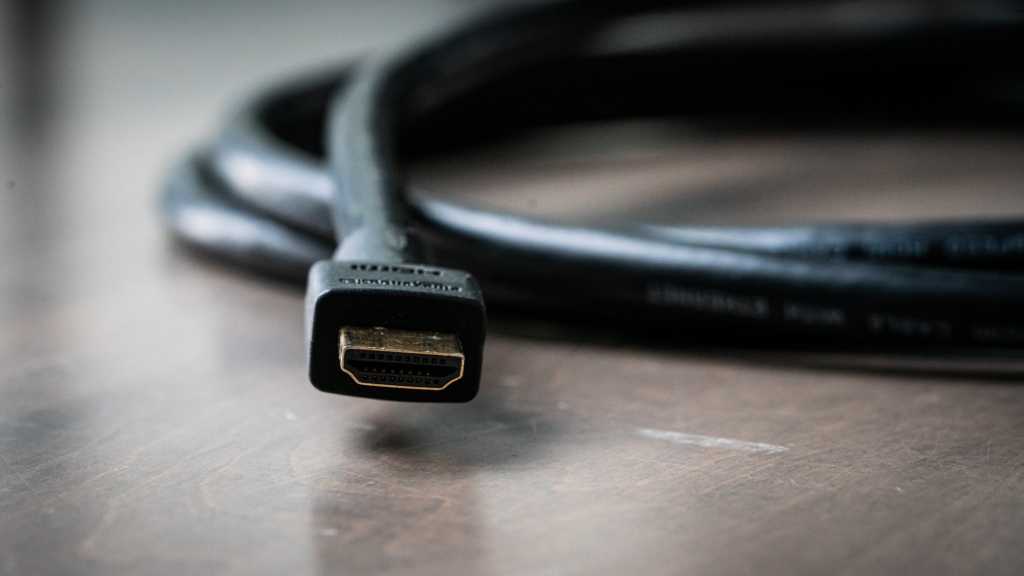
2) Don’t forget about HDMI.
The base of audio and video products is the HDMI cable. It’s a simple solution on the surface but actually quite complex, as HDMI cables have a considerable amount of variety in specifications, cable types, and quality.
With the continuing increase of bandwidth needed for 8K, there is going to be a move to fiber HDMI instead of copper HDMI. When spending money on televisions that boast 8K or better colors, then it is important to move the consumer to purchase fiber HDMI cables. It is electricity versus laser. Traditional copper cables use electricity and have distance limitations. The fiber cables use lasers, which travel faster than electricity. Fiber also does not have to deal with electromagnetic interference (EMI) or radio frequency interference (RFI), therefore greatly reducing attenuation and allowing the cable to run a much greater distance. Blind studies have also shown consumers chose fiber every time for picture quality. They are a bit more expensive but when the time is right, they are worth the price!

3) Remember that Wi-Fi and cell coverage are musts for all homes.
Having slow Wi-Fi or dead zones in a home should no longer be an issue, with the advent of mesh networks. When combined with a good service provider and the right equipment at a home or office, the mesh network provides a consistent Wi-Fi signal. A mesh network router and strategically placed access points provide Wi-Fi signals to areas that do not traditionally get strong Wi-Fi signals – anywhere in the home or office. The mesh network will also maximize the signal to the nodes that are being used most. Eero, Netgear, Ubiquity, and Google Nest all have mesh-network Wi-Fi systems.
Cell phones are a vital part of life for most consumers. Cell phones are more than just phones now; they are extensions of work, connections to family and friends via social media, and another place to watch television, movies, and music. Having stable cell service is important to consumers. Luckily, there are a variety of products on the market just to service this area. WeBoost from Wilson Electronics provides cellular boosters for the home, office, and vehicles. These come in all price points, with many options based on your needs, and they work with all networks on any carrier.

4) Sell outdoor living spaces.
The pandemic continues to stretch on, and while life is trying to get back to normal, consumers are still being more careful. Because of this, outdoor technology products have seen a large rise in sales. Turning a backyard into an outdoor living space can be done with any type of consumer budget, since there are so many options at every price point. Outdoor audio and lighting have come a long way in providing solutions for diverse types of backyards and scenes.
Companies like Phantom Screens turn an attached porch (deck/lanai) into a screened TV area with automated retractable screens; it’s as simple as hitting a button. Seura and Sunbrite produce outdoor televisions in several sizes and are designed for dust, sun, and heat. There are so many options when it comes to weather-resistant speakers, too. Sonance offers several outdoor audio systems that will blend in with any landscaping. Coastal Source provides not only outdoor speaker systems, but lighting as well.
Even a simple waterproof Bluetooth speaker can begin to transform a backyard. With outdoor products and pricing becoming available to all wallets, outdoor living products are an excellent way to bring in additional revenue.
5) Be open to new categories and technologies.
Tech is everywhere and in everything, so it’s easy to get complacent. Make sure to stay open to new areas of technology products. Categories that were once so out of place in CE stores are now completely in that wheelhouse.
The U.S. invested heavily in electric vehicles over the past 10 years and now the electric bicycle is the fastest-growing product in that category. Suitable for most ages, and available in a variety of options for families, terrain, and usage, e-bikes will only continue to grow.
Beauty and wellness is also an area not to shy away from. Men’s grooming products are a category that was worth $53.6 billion in 2020. This category is predicted to hit $74.8 billion by 2028. The growth is due to a push in tech-driven innovations over the last couple of years. BIC has been working on the BIC Smart Shaver. The shaver is an AI-powered razor that gathers data about the user’s shave. Everything from hair thickness, water temperature, blade maintenance, and suggestions for better shaves is sent via Bluetooth to the app, ideally creating a better shaving experience. It’s powered by The Next BIC Thing, (introduced at CES in 2020), which is a platform to connect consumers with their innovation and research and development processes.
And lastly, don’t forget all the smart appliances! Schott has gone to market with a smart stovetop. The Ceran stovetop features stunning lighting solutions for the kitchen. Integrated into the product, the lighting is the icing on the cake in this unique stovetop. Everything in the kitchen is now available with a smart solution built in. Microwaves, toasters, blenders, refrigerators, and even trashcans are available as smart products.
STAT SHOT
CE Industry By The Numbers
COMPILED BY SAM HITT
45,000…
…people took the trip to Las Vegas in early January to attend CES 2022, despite major corporations including Microsoft, Google, Twitter, Meta, and Amazon pulling out of the event in the weeks prior over concerns of COVID-19.
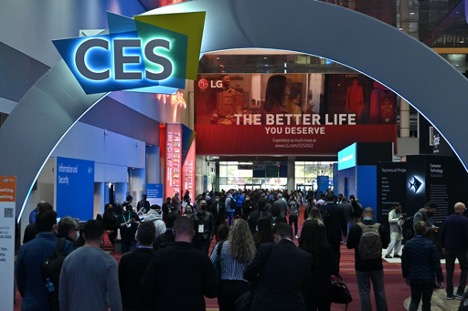
67%
…of e-commerce sales in 2021 came via mobile devices, according to data procured by social media giant Snap Inc. To meet demand, the company opened a series of mobile augmented reality (AR) holiday stores for Walmart, among other retailers, on its Snapchat service.
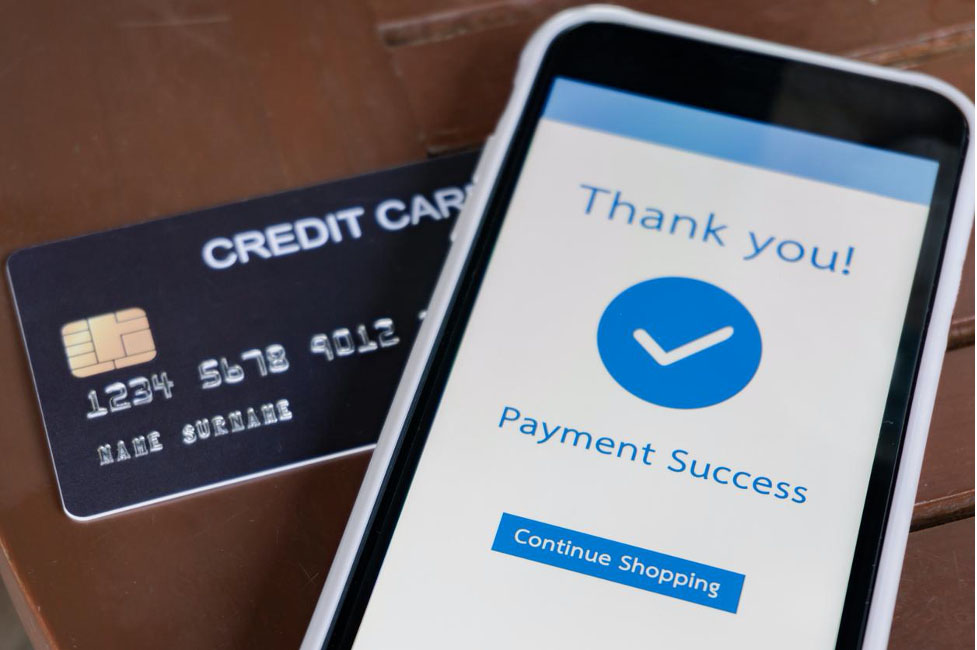
$742.63 bn…
…was spent by consumers during the 2021 holiday season from October to December, according to new data released by the U.S. Commerce Department. 2021 also saw an eight percent year-over-year increase in electronics and appliance sales compared to 2020.

5,000…
… GM BrightDrop delivery vans were ordered by Walmart last month at CES 2022, with 2,000 more being ordered by transportation giant FedEx. These major retail and delivery giants are looking to utilize electric vans as a mechanism for lowering their carbon footprints.
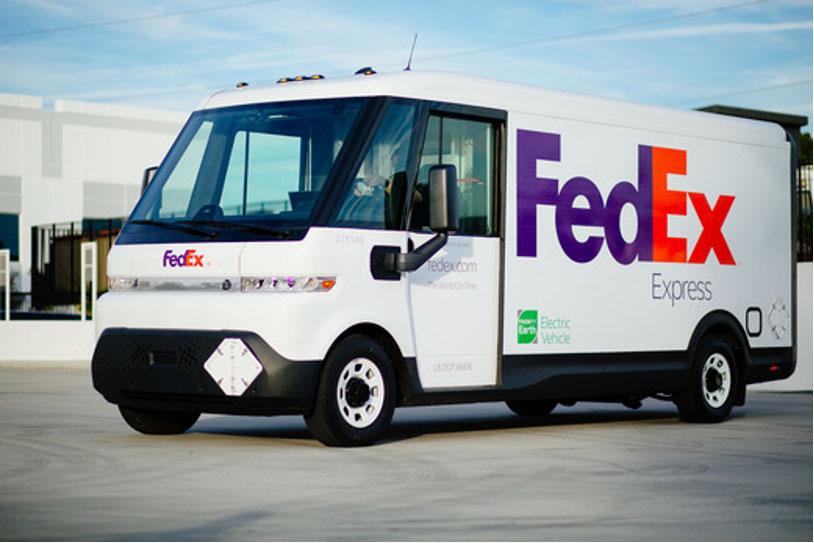
11...
…times faster is the pace that the resale market is growing in comparison to traditional retail sectors. This dynamic is due to a combination of factors ranging from advancements in resale technology to increases in consumer demand for sustainable methods of shopping.
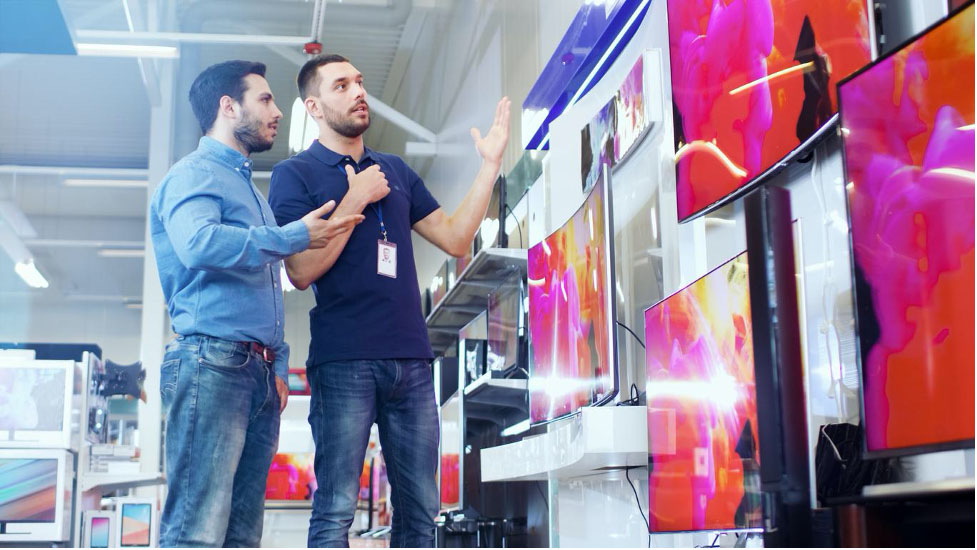
DEALERSCOPE PODCAST
Welcome to the Dealerscope Podcast – Your Source for all B2B trends in Retail, Tech and Biz!
In the high-strung consumer electronics retail business, it can be hard to take a moment to step back and breathe. The Dealerscope Podcast gives CE retail leaders the chance to kick back, relax, and talk shop in a casual setting.
Get Dealerscope
and Connected Design
delivered to your doorstep
or to your email.
Click on the links below to update how and where you receive your issues! Change your mailing address or request a change from print to digital, subscribe to our newsletters, or just head to our websites.
CONNECTED DESIGN
Subscribe to Print Magazine
Renew Your Subscription
Subscribe to Newsletters

OFFICES
100 S. Juniper St., 3rd Floor
Philadelphia, PA 19109
132 West 31st Street, 9th Floor
New York, NY 10001
EDITOR IN CHIEF
Tom Samiljan
tsamiljan@ctlab.media
CT LAB EDITORS
Sam Hitt
Erinn Loucks
CONTRIBUTORS
Nancy Klosek
Dan Mikesell
John R. Quain
Egon Sanders
Stephen Silver
CREATIVE
Astrid von Krenski
(940) 727 8595
avkrenski@ctlab.media
CHIEF SOCIAL MEDIA AND WEB EDITOR
Brenda Thelusca
(561) 752-6670
bthelusca@ctlab.media
GROUP PUBLISHER
Tony Monteleone
(718) 216-2046
tmonteleone@ctlab.media
OPERATIONS MANAGER
Vicki Manucci
vmanucci@ctlab.media
CIRCULATION & DISTRIBUTION
Carrianne Ramsey
cramsey@ctlab.media
ACCOUNTING/HR MANAGER
Catalina Gonzalez
cgonzalez@ctlab.media
CHIEF OPERATING OFFICER
Alice Schmalzl
(940) 612-9581
aschmalzl@ctlab.media
OFFICES
100 S. Juniper St., 3rd Floor
Philadelphia, PA 19109
132 West 31st Street, 9th Floor
New York, NY 10001
dealerscope.com
Publisher of Dealerscope, and Connected Design
Copyright ©2021 CT Lab Global Media LLC
CT Lab Global Media is a diversified publisher of business and professional magazines. This publication is provided with the express understanding and agreement that the information and data within it will be solely for internal use and will not be used for the creation or updating of mailing lists for sale or distribution to third parties. Printed in the U.S.A.



